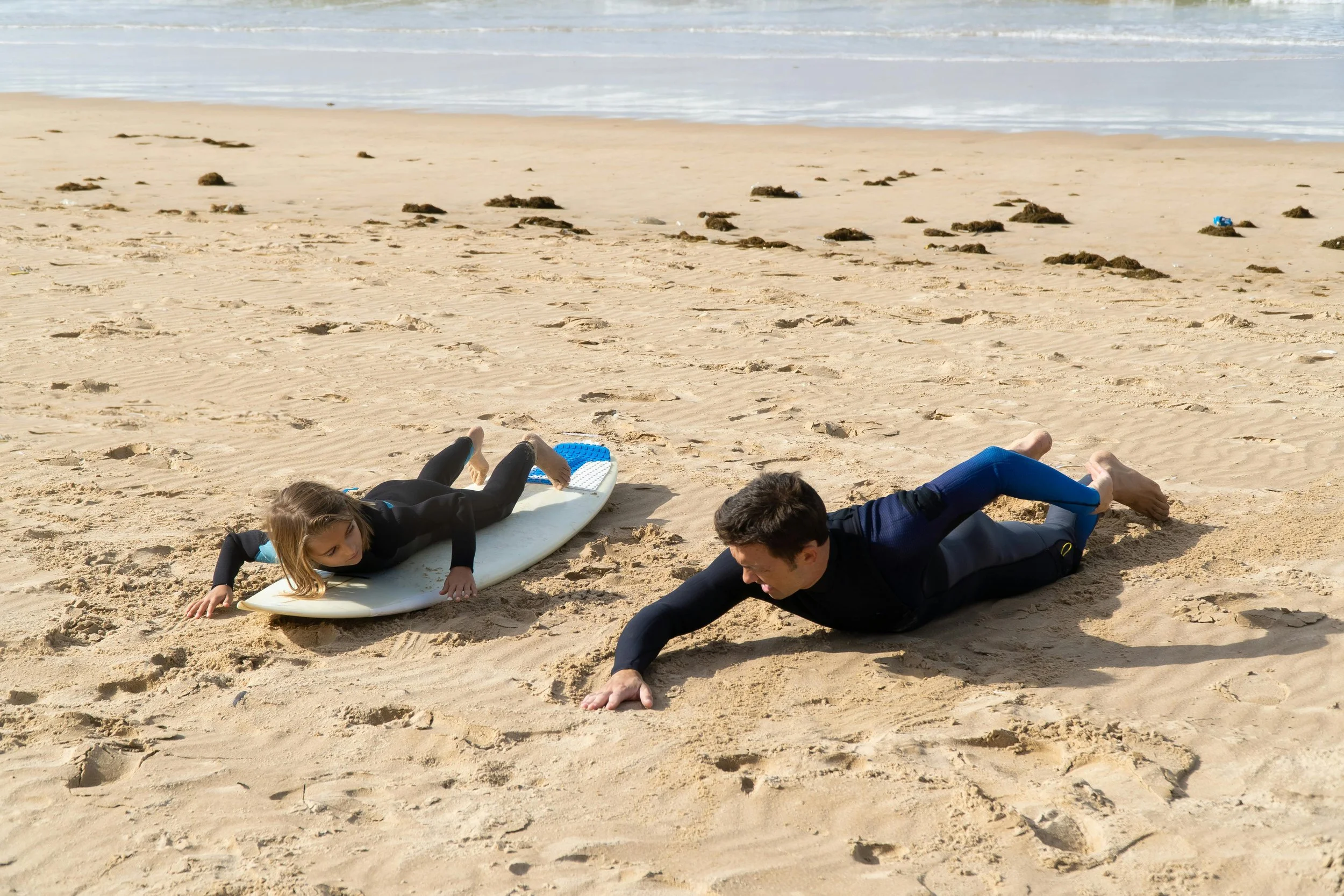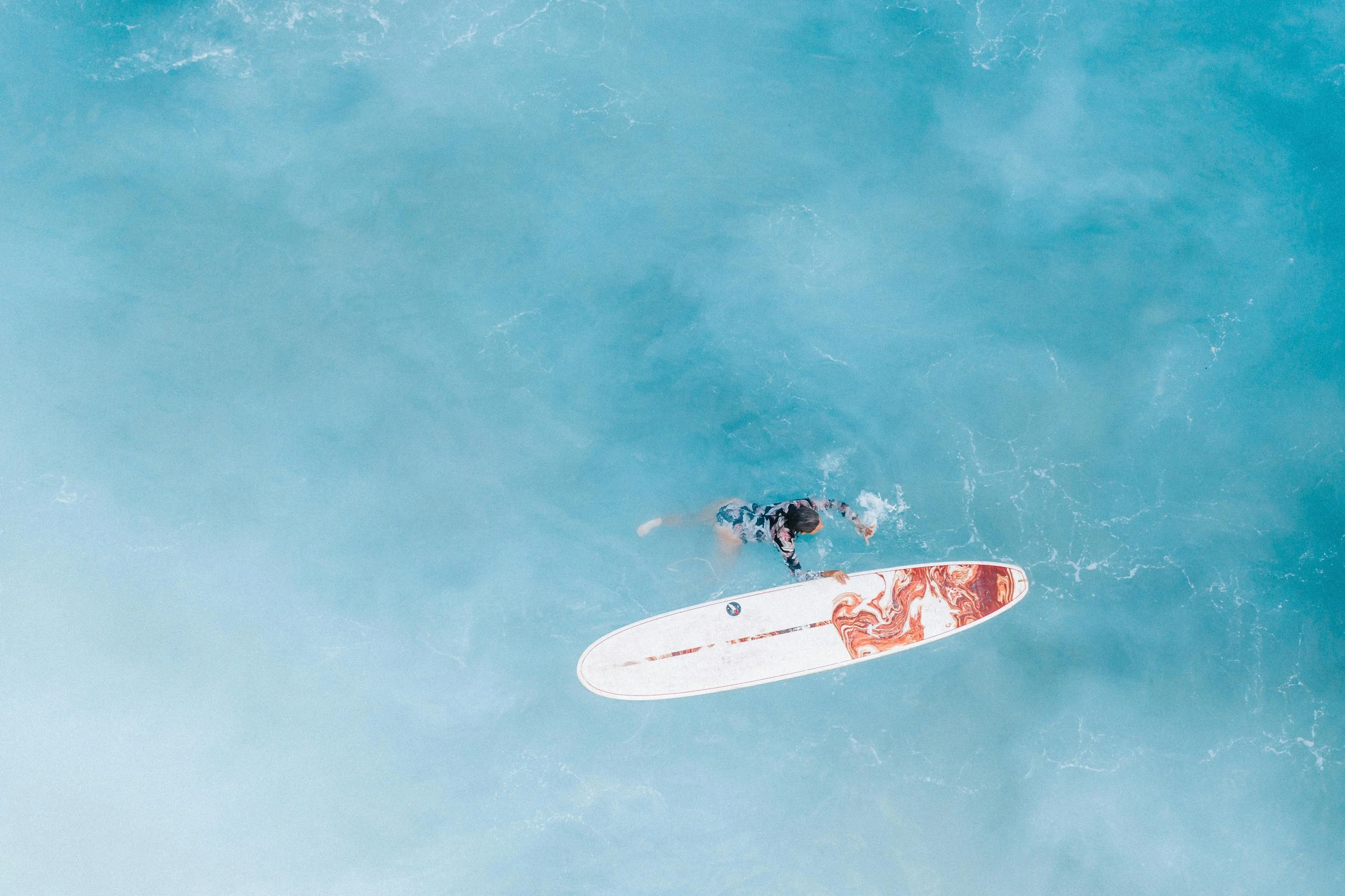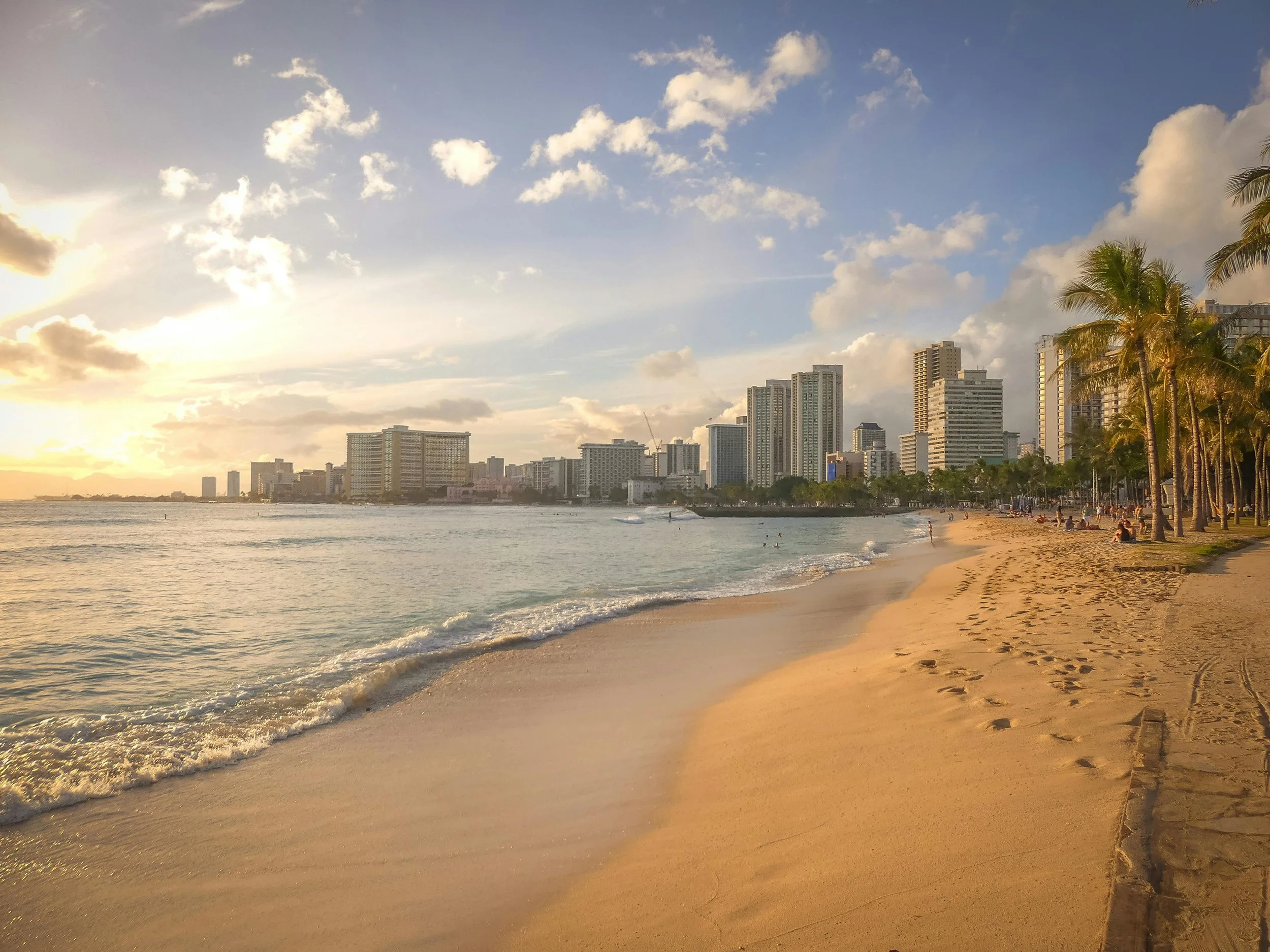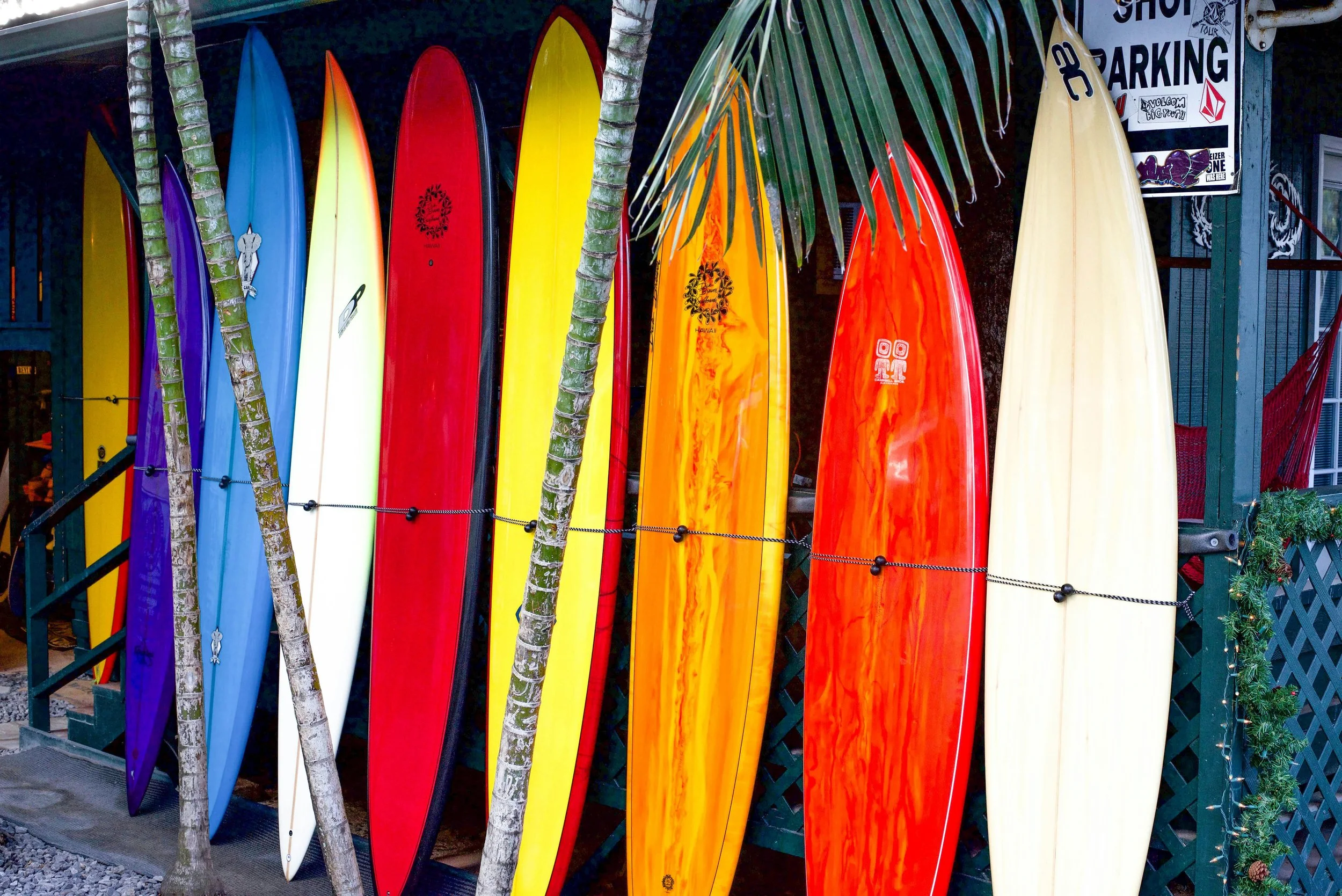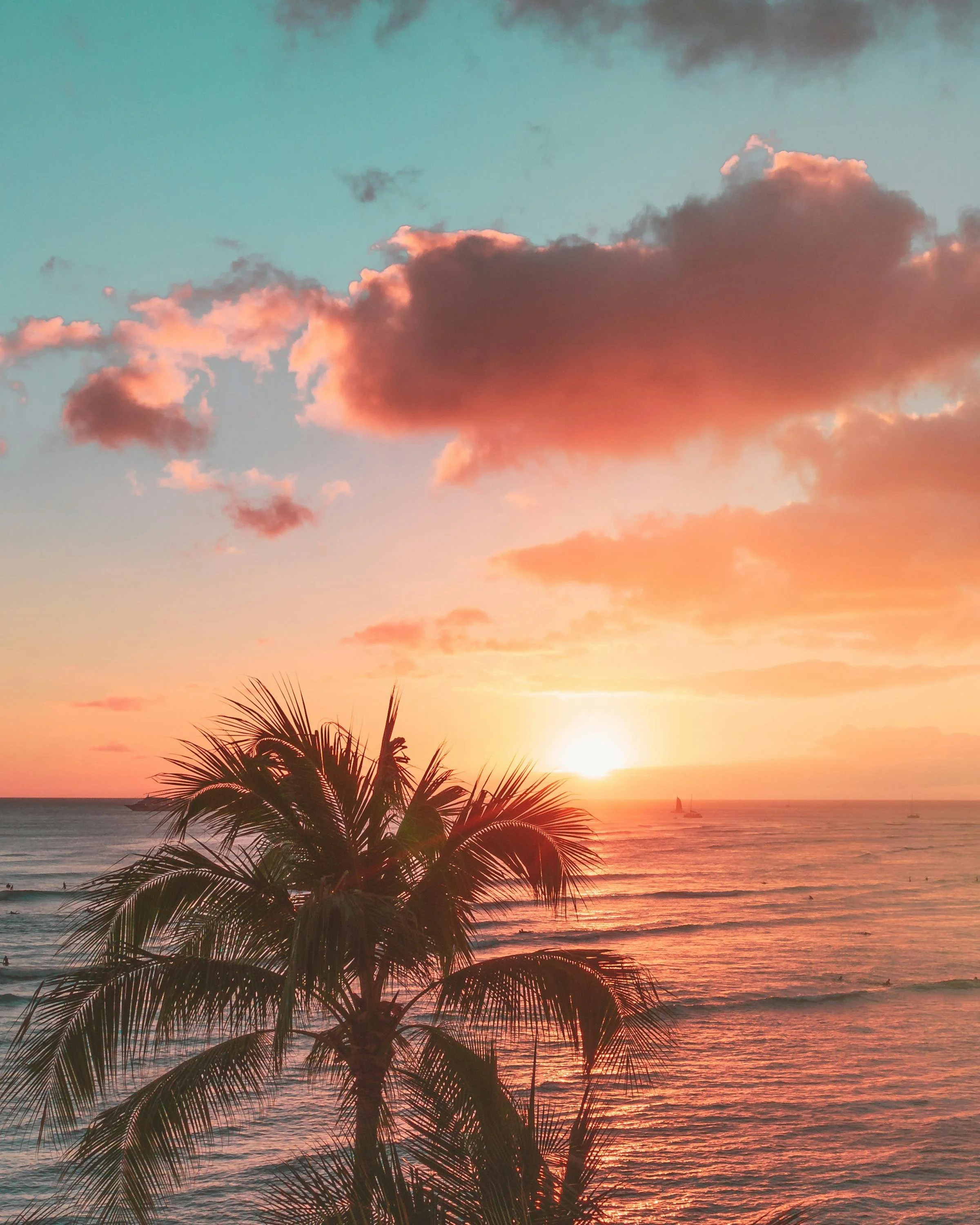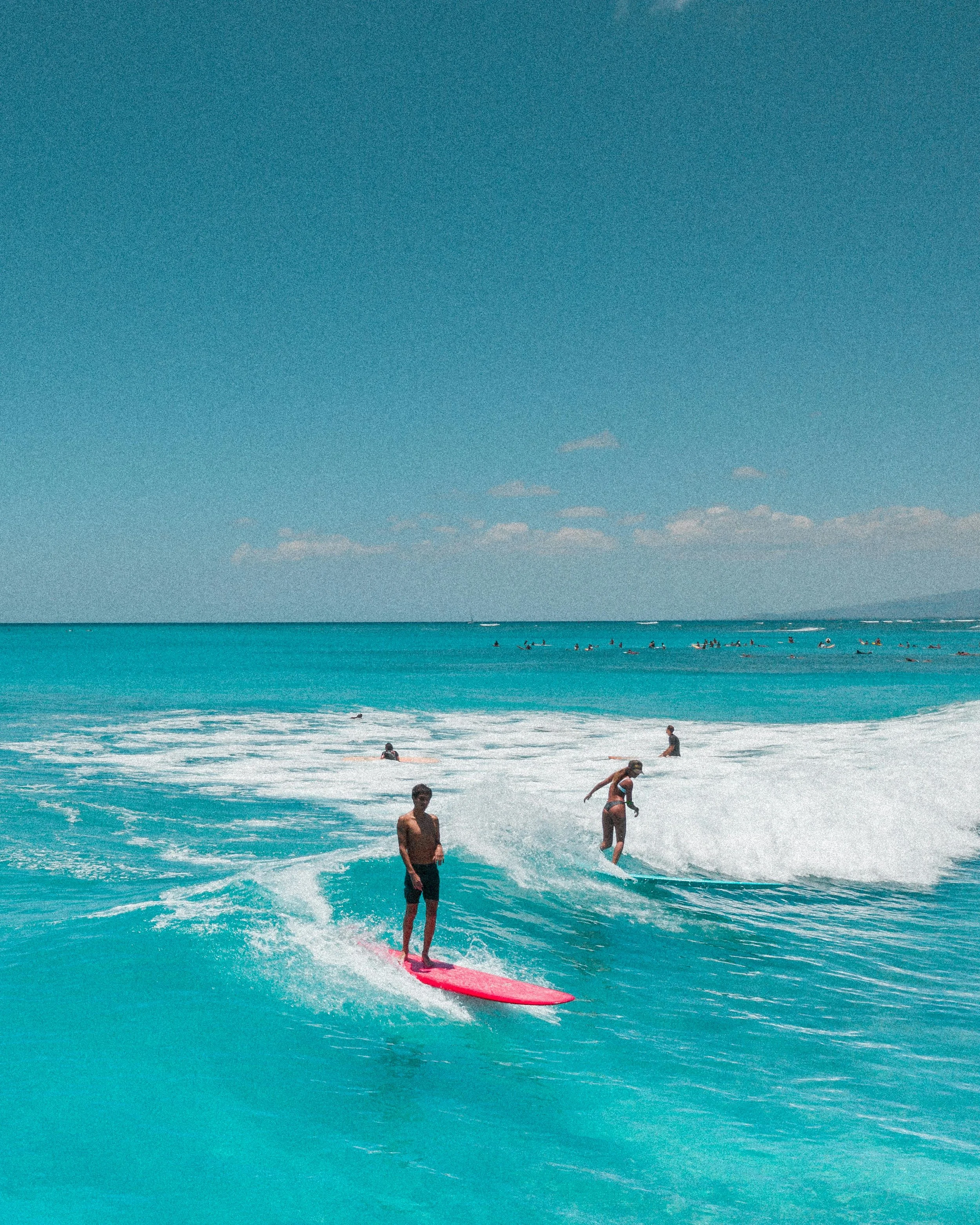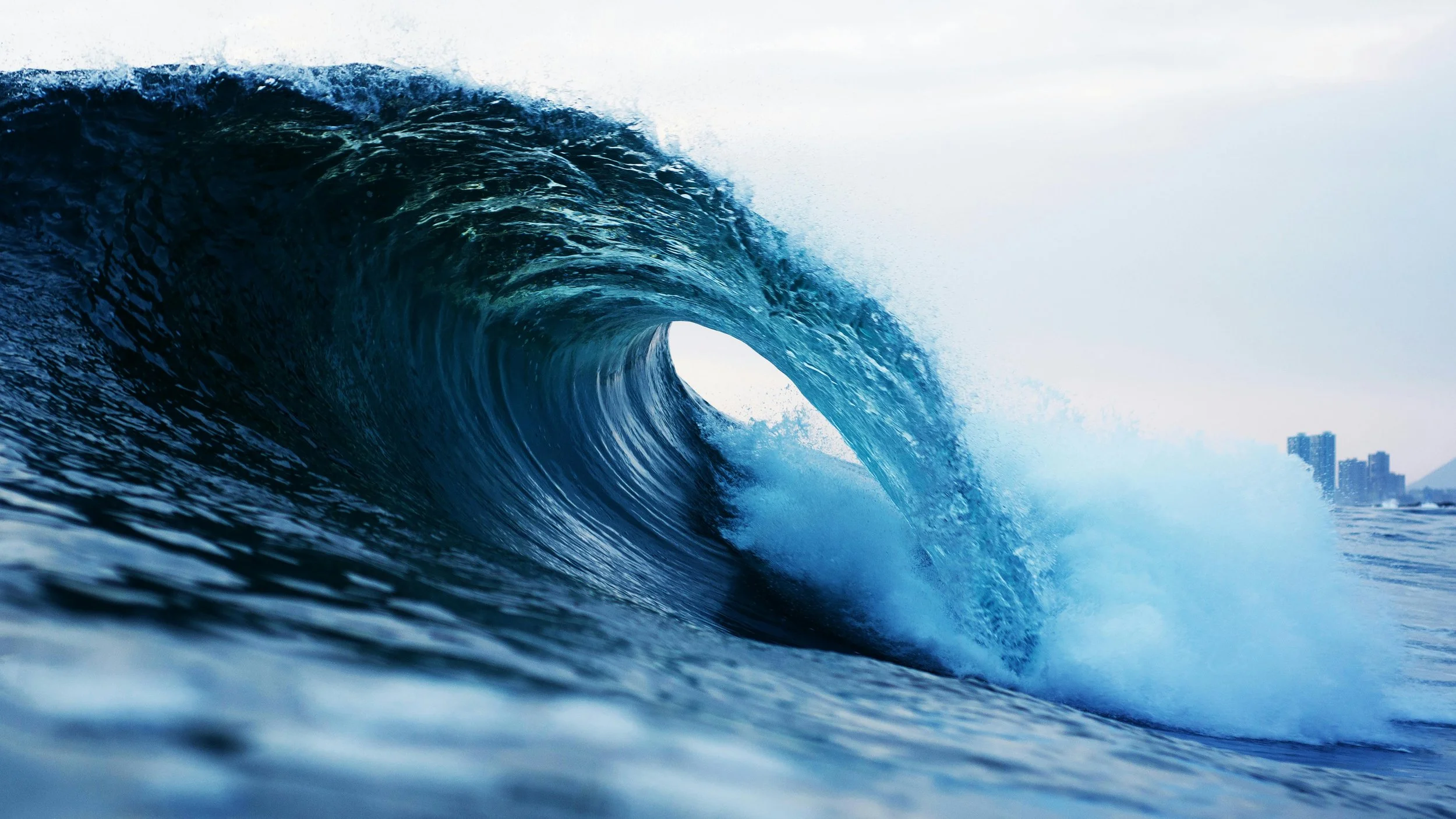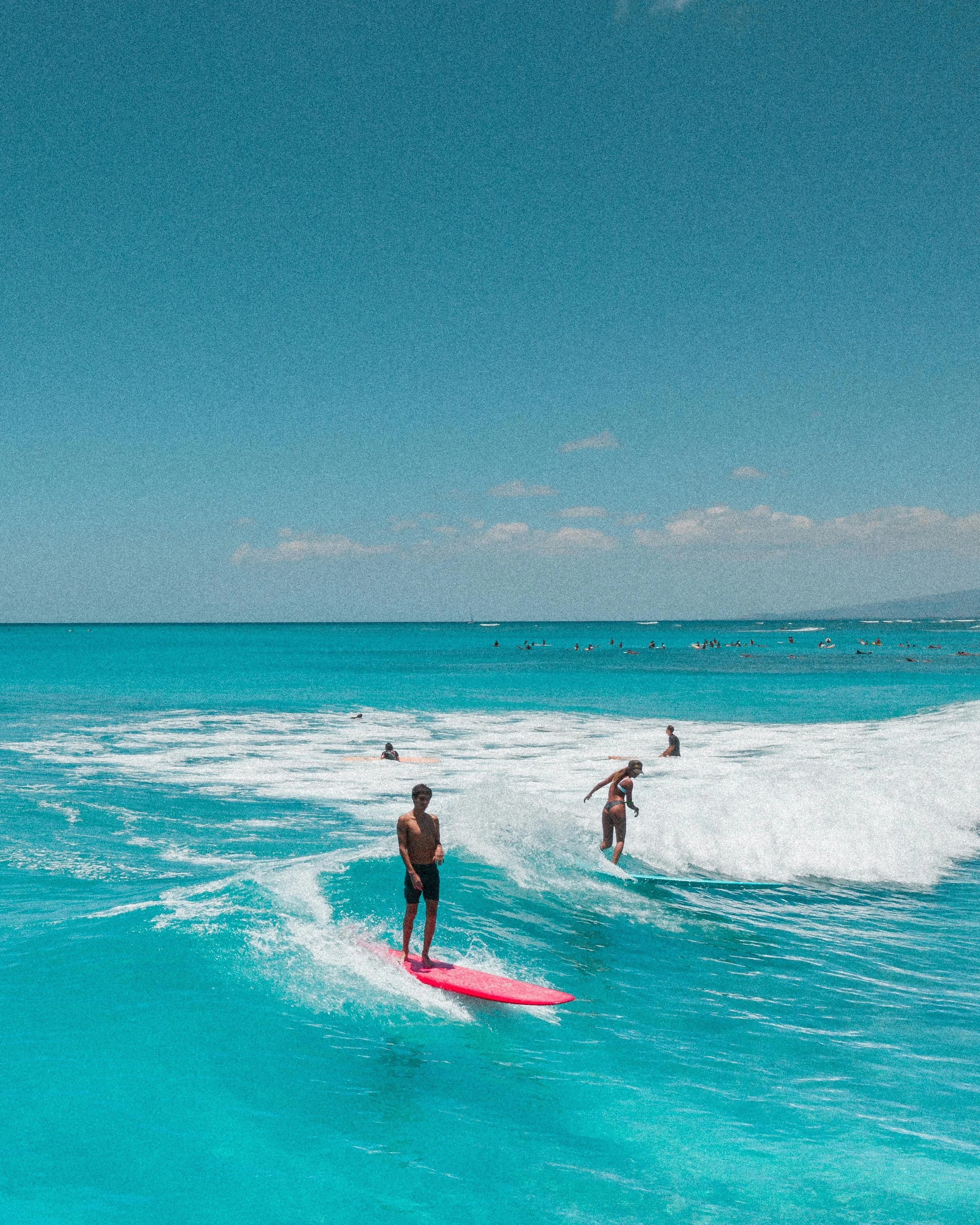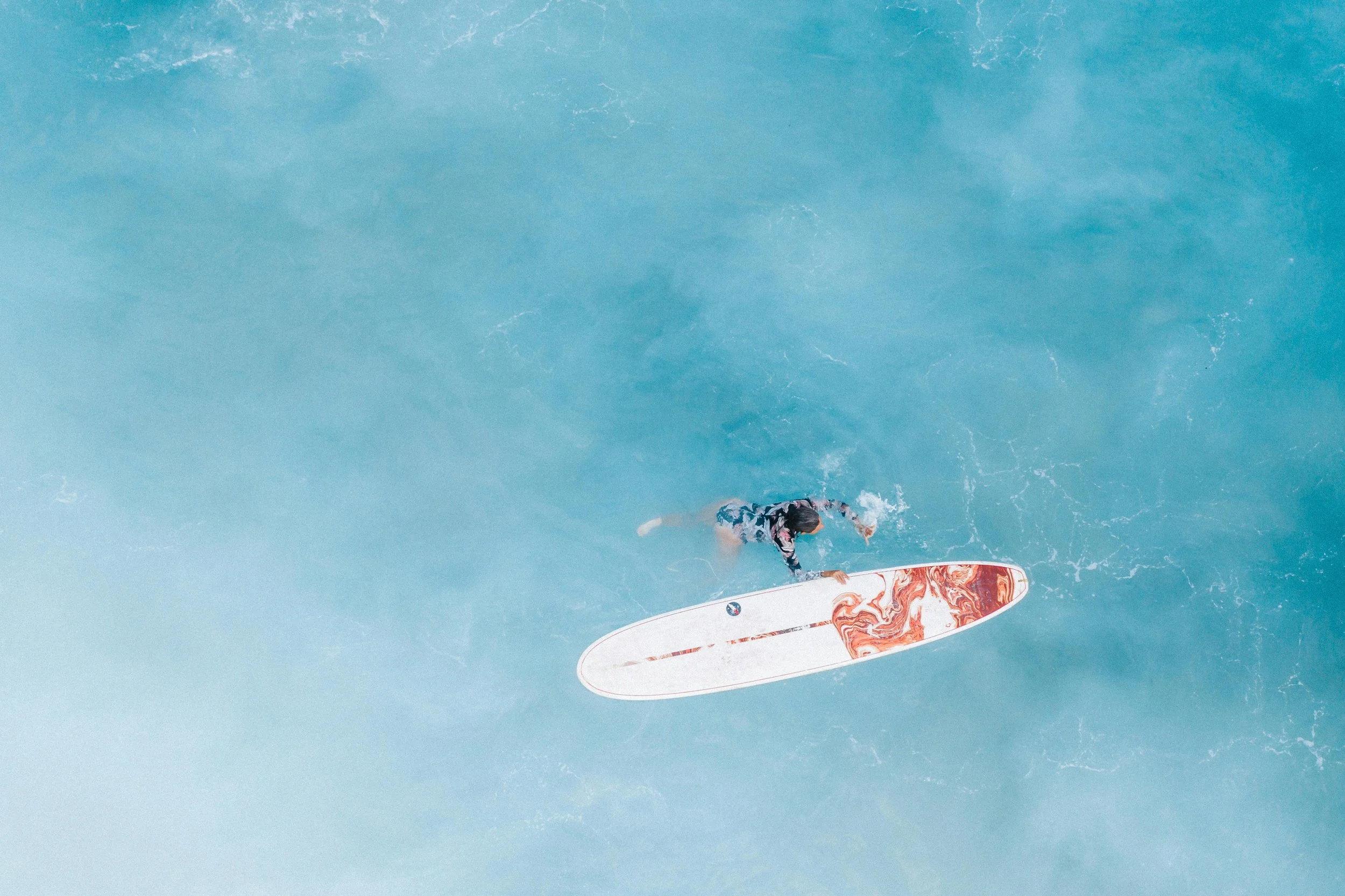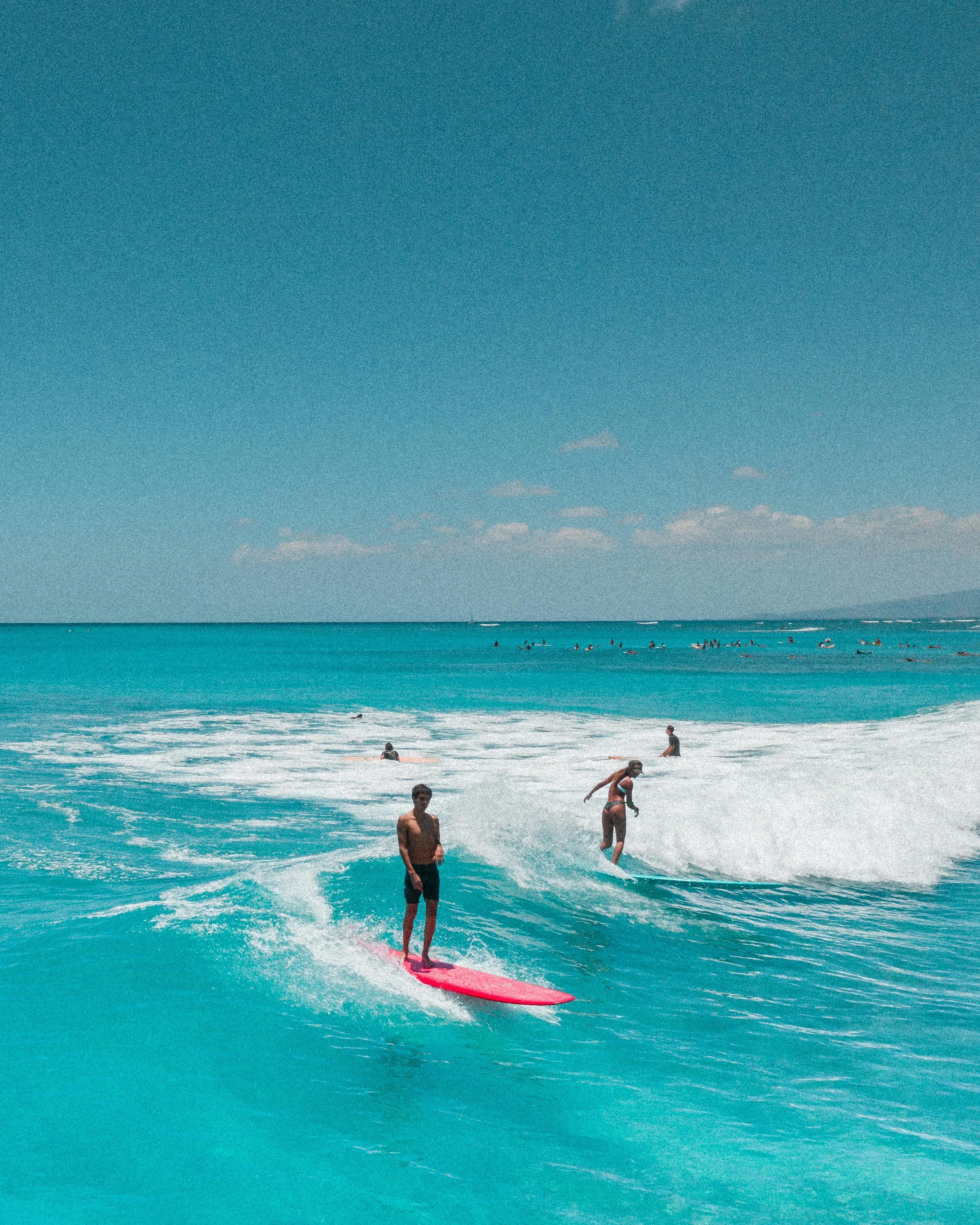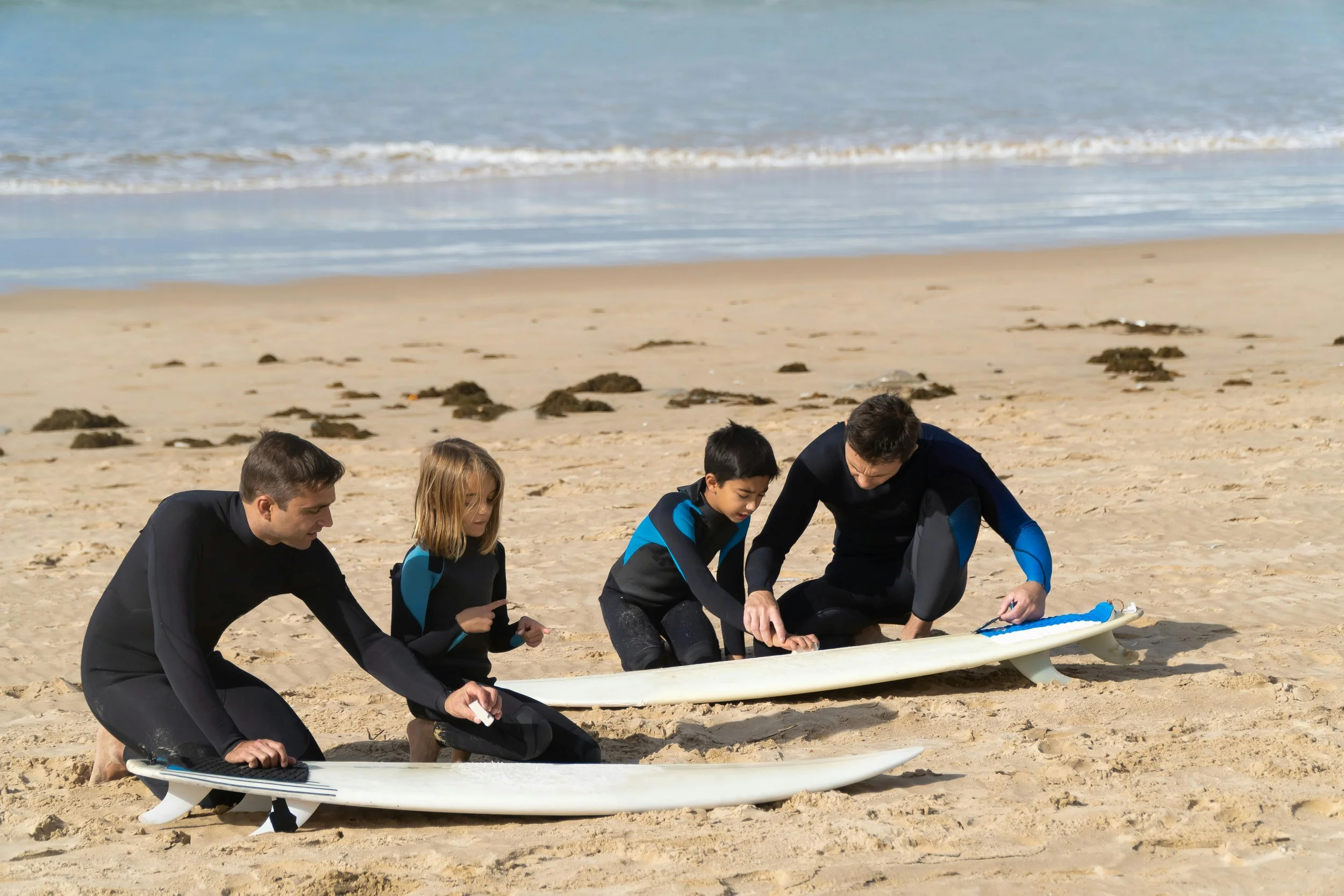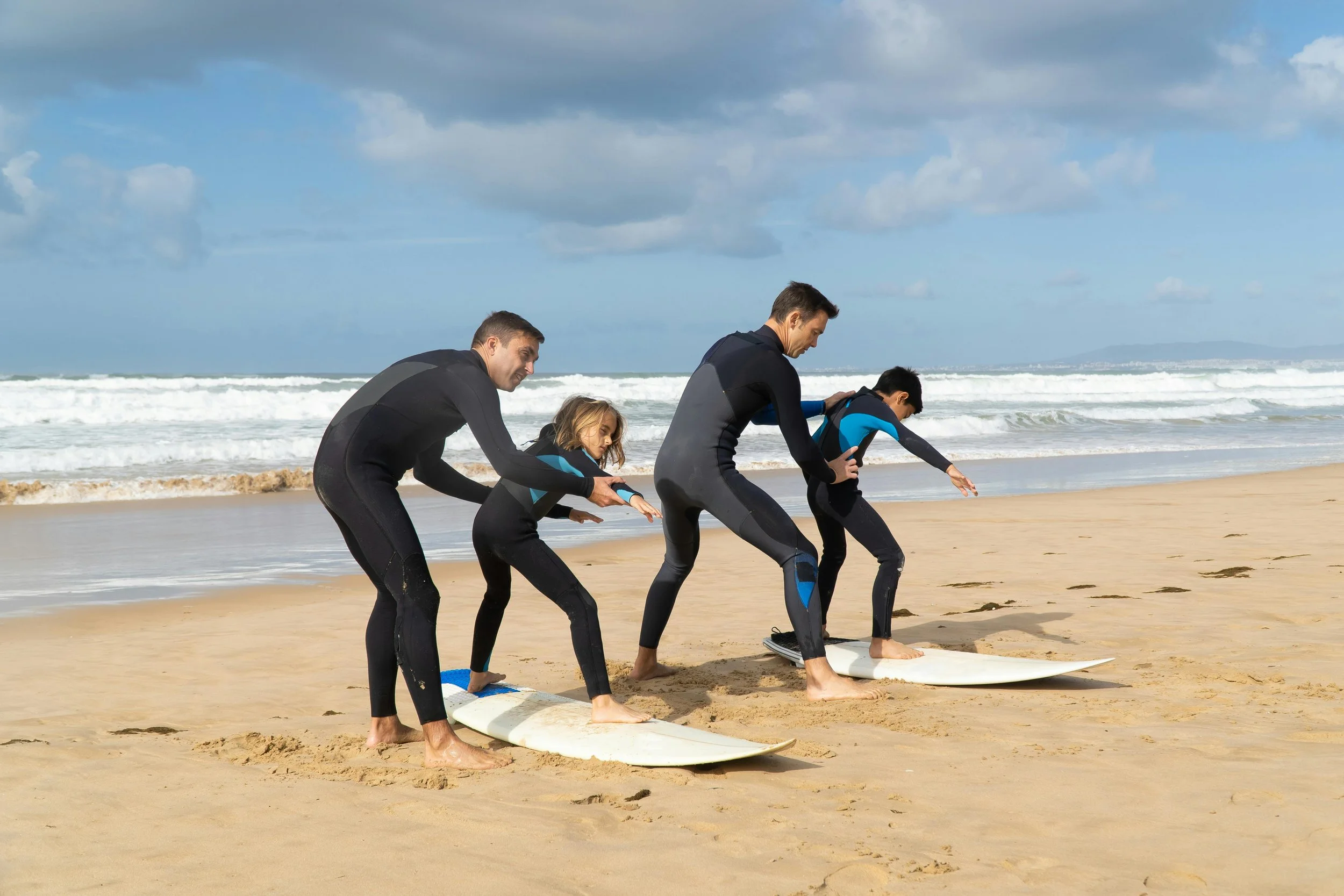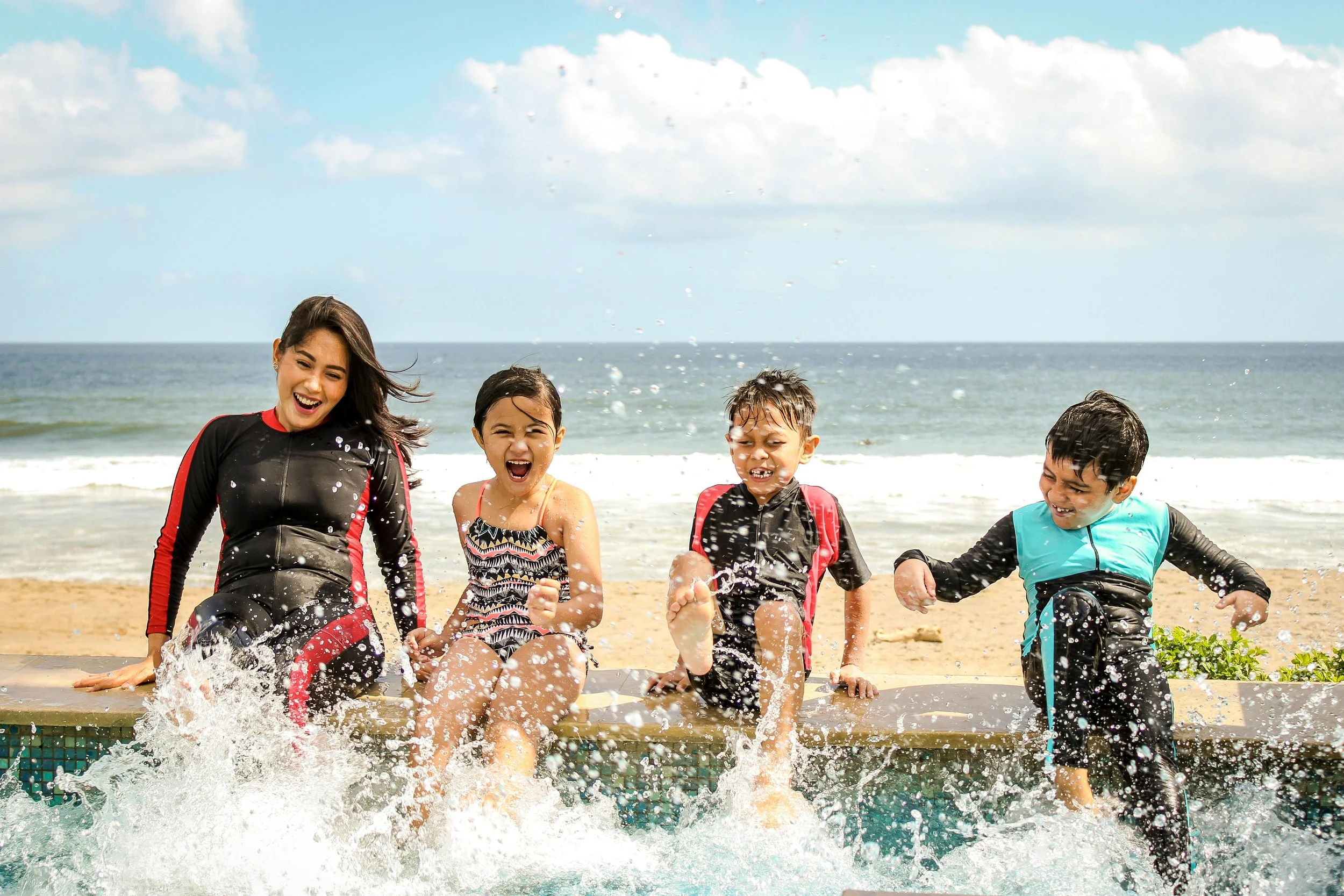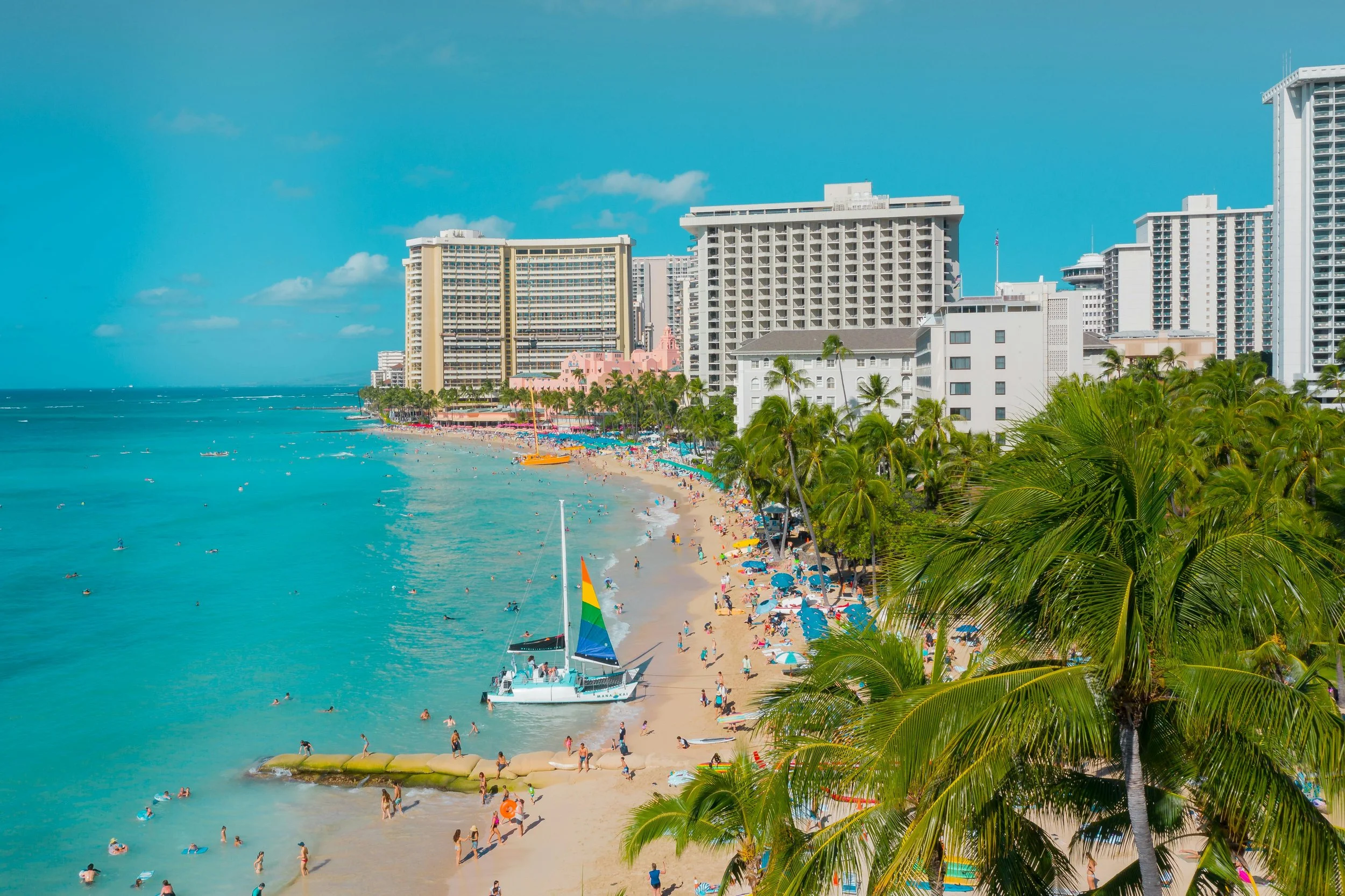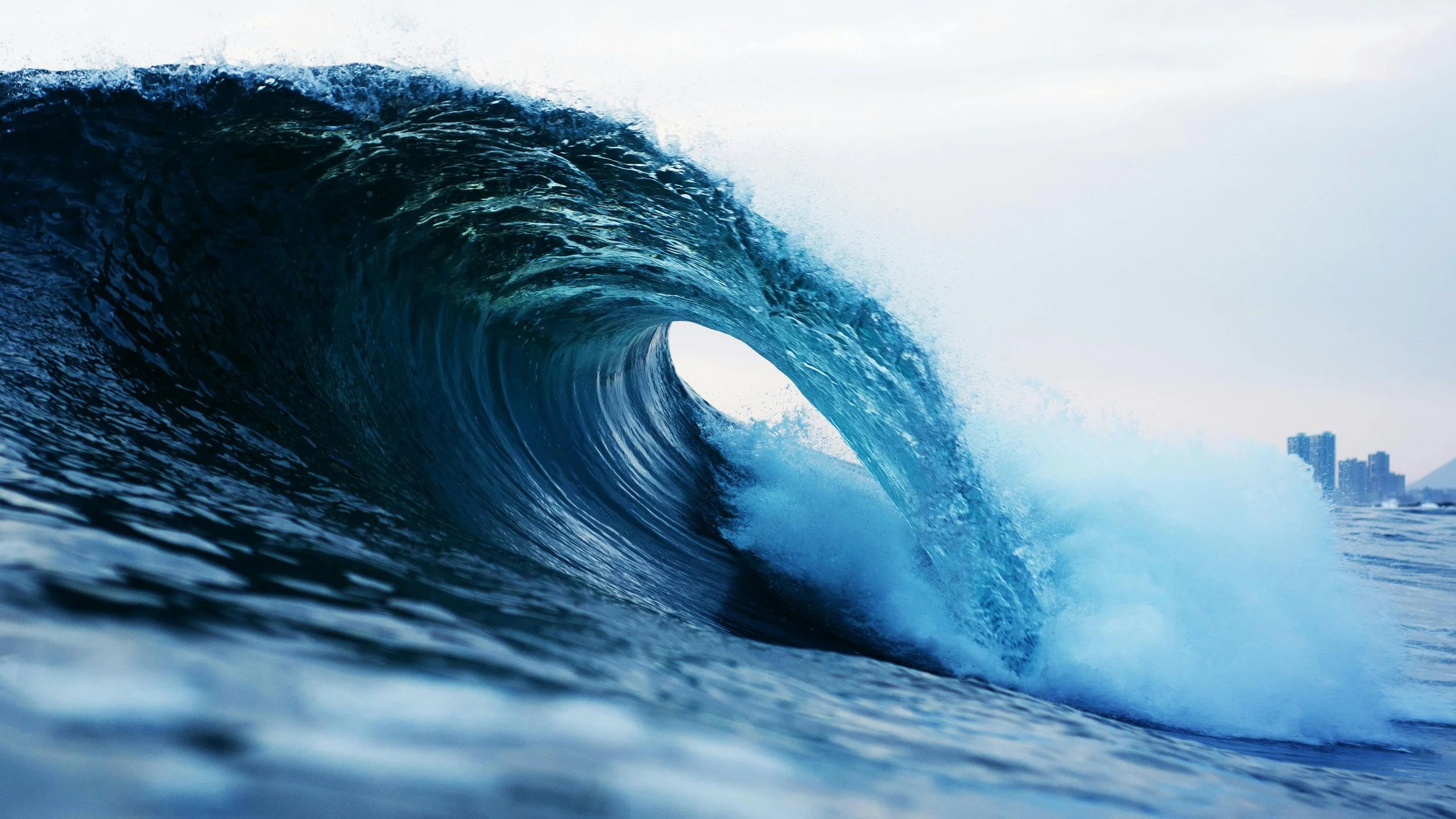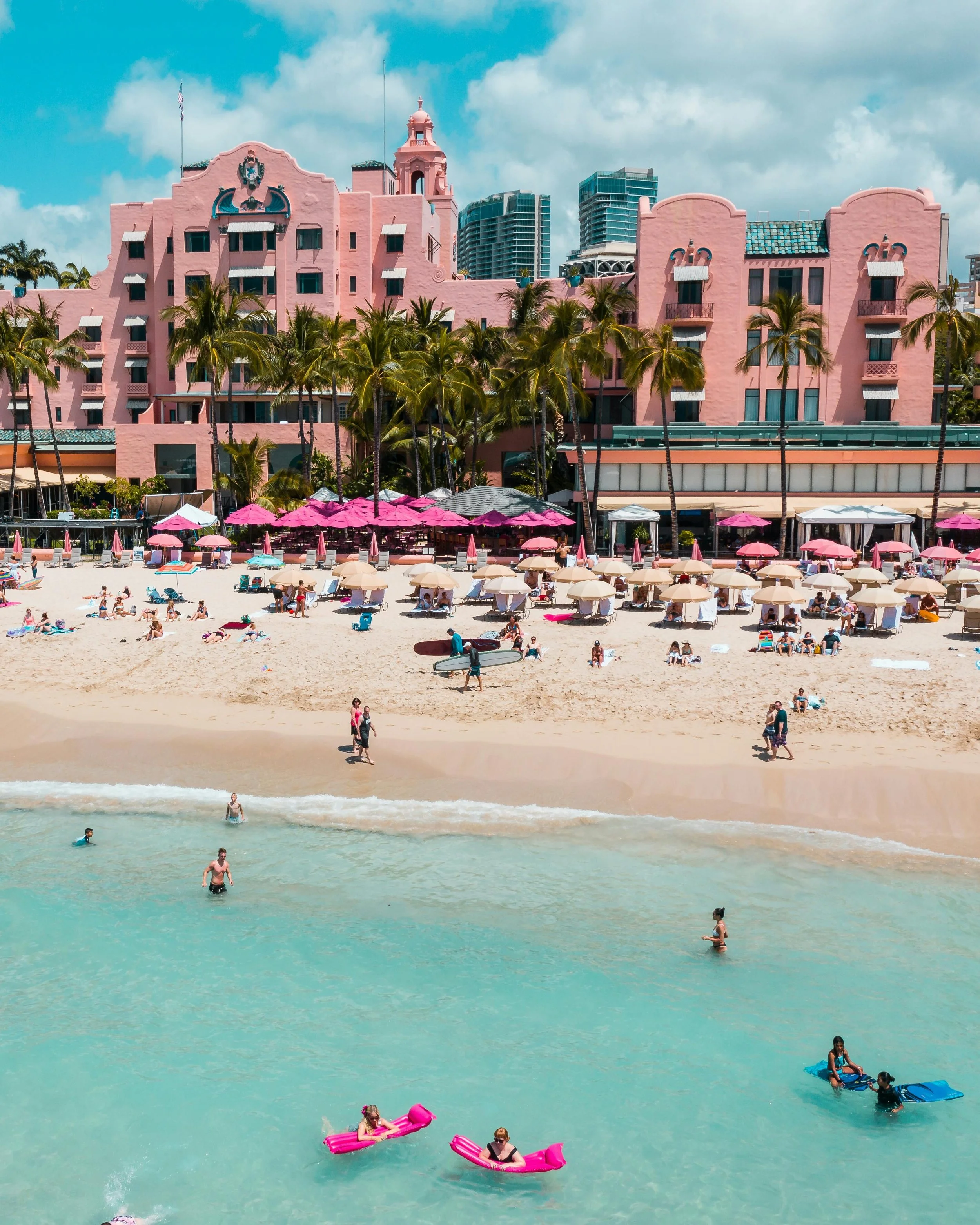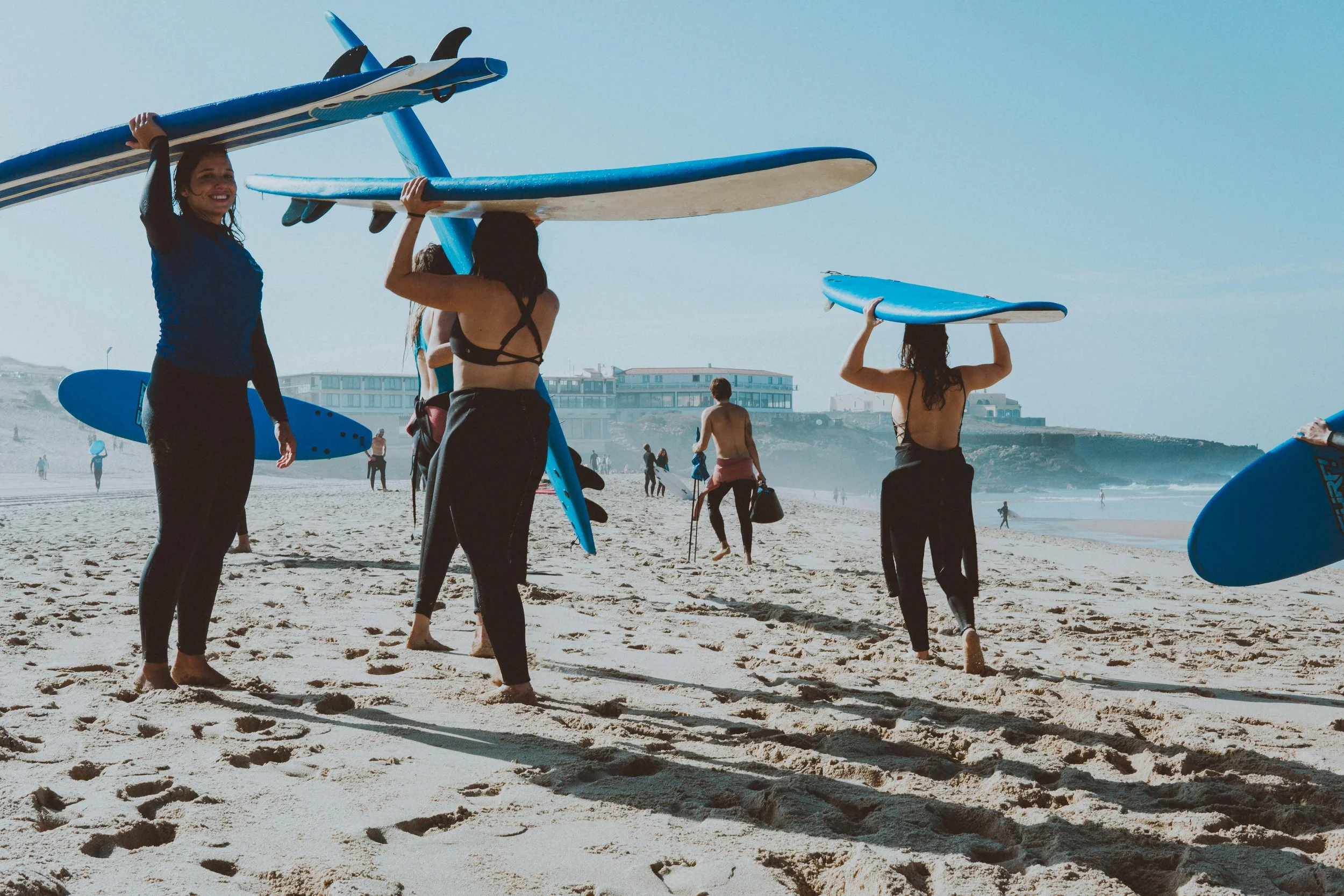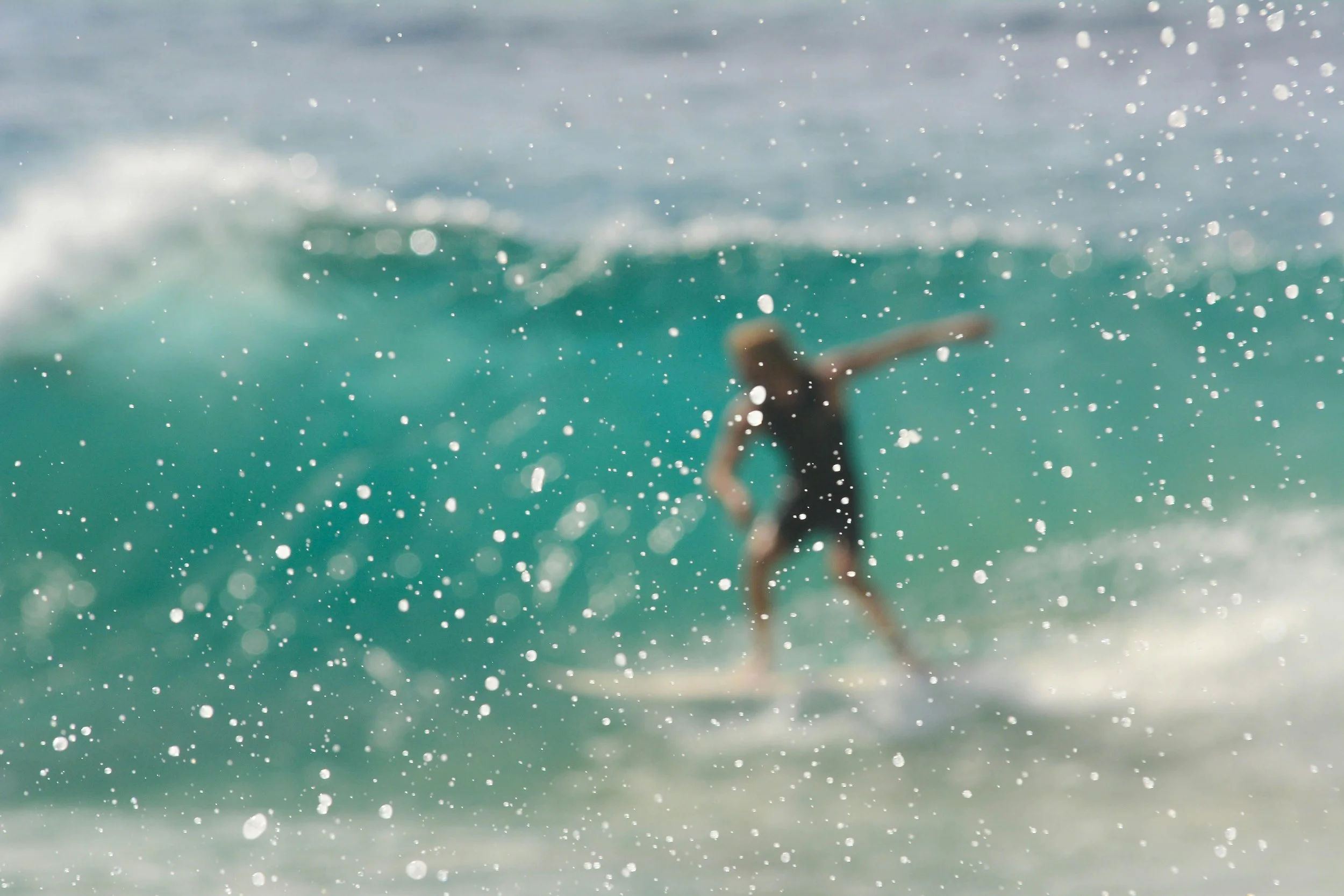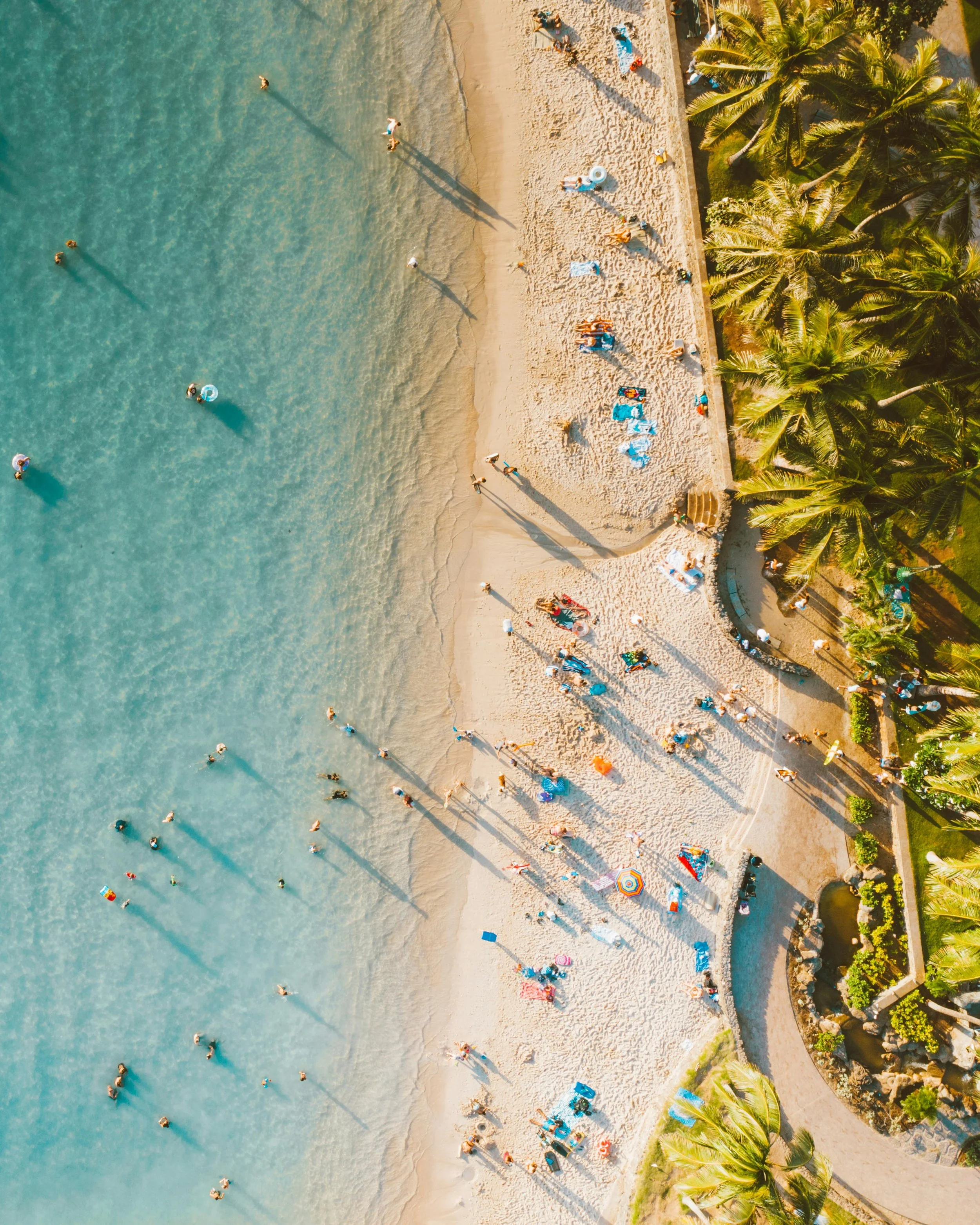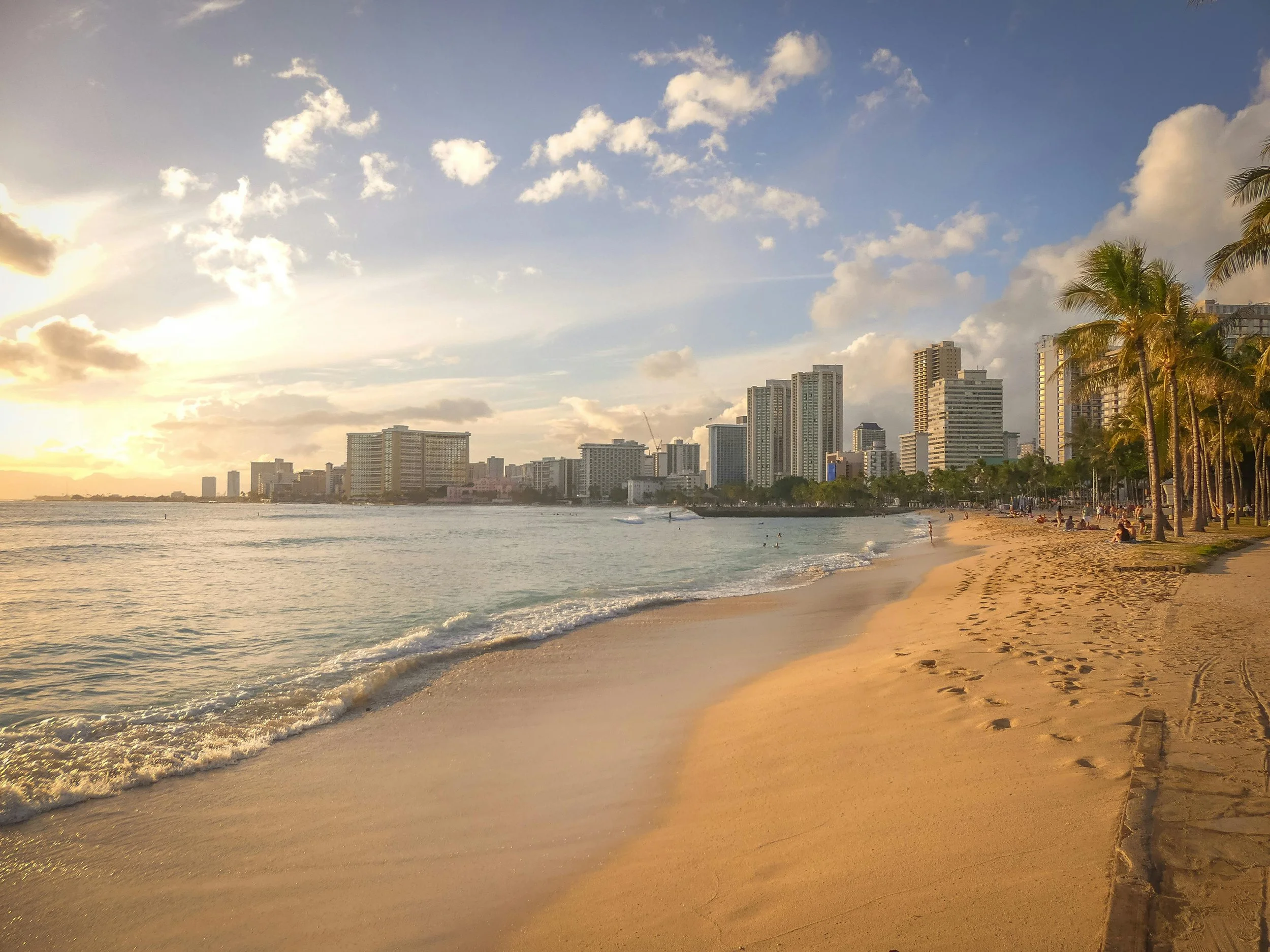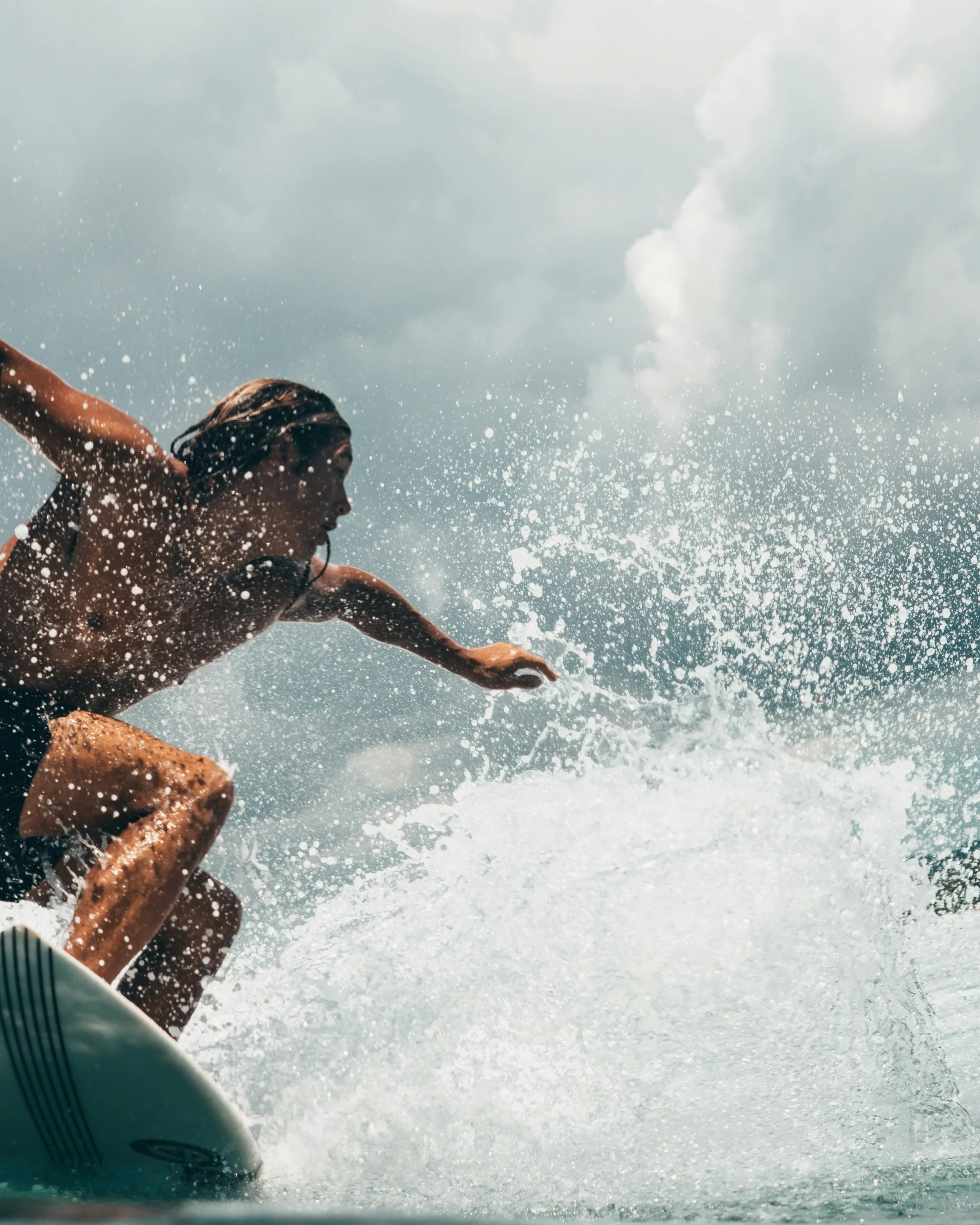Waikiki Kids Surf Lessons: Big Wave Dave’s Guide for Parents
Our Waikiki kids surf lessons are designed to be safe and fun, so your child can experience the joy of surfing while you relax knowing that they’re in good hands. Our surf lessons take place in Waikiki – the ideal location for beginner surfers. Our instructors are pro watermen who live and breathe the ocean– not just at work but in their spare time too. Waikiki kids surf lessons are the perfect way to level up your Hawaiian vacation.
What makes Waikiki the best place for children to learn surfing?
You picture Waikiki. Sun warms your shoulders. Waves roll in smooth and steady. No monster swells here. Just the kind of gentle push a beginner loves.
That’s why kids thrive in these waters.
Small waves build confidence.
Soft sandy bottom keeps it safe.
Lifeguards stay close, always watching.
Parents relax. Kids laugh. The ocean feels like a giant playground.
And unlike other beaches, Waikiki rarely takes a day off. Surf stays consistent year-round.
How do Waikiki kids surf lessons usually work?
Parents want structure. Kids want fun. Our lessons strike both.
Classes last about 90 minutes.
Group lessons stay small so no child feels lost. (Or opt for a private lesson for more one-on-one time and individual focus)
Private lessons remain an option for shy beginners.
Instructors start on land. Kids learn stance, balance, and safety in minutes. Then it’s water time. Short bursts, lots of cheering, and even more splashes.
The best part? Kids stand up faster than most parents expect.
What age is best for children to start surf lessons in Waikiki?
Parents ask this all the time. “Is my child too young? Too old?”
Here’s the scoop.
While we teach children as young as four years old, for safety reasons, we do require that kids 4-8 years old have a private instructor. This allows them to ride tandem on a board with an instructor or side by side on two boards and be individually monitored at all times while they are in the water. Wave conditions could require older children to take Private Lessons. If you have younger children, please let us know when reserving so we can have the correct number of instructors available. The private instructors will incur an additional cost.
With our expert instructors, every kid finds their rhythm when given patience.
Why choose Big Wave Dave for Waikiki kids surf lessons?
Plenty of surf schools exist. So why us?
We’re locals who know Waikiki like family.
We teach kids with humor and patience.
We respect the ocean and pass that respect on.
Parents tell us their kids never stop talking about the lesson. That’s the sign of a good day.
And yes, our instructors know how to make kids laugh when nerves creep in. A goofy dance or silly face works wonders.
Surfing looks like a sport, but here it feels like play.
What equipment do children need for surf lessons?
Parents pack bags full of gear. Truth is, we provide almost everything.
Kid-sized surfboards with soft tops.
Safety leashes for peace of mind.
Rash guards to block sun and scrapes.
Parents just bring:
Sunscreen.
Water bottle.
Smile.
That’s it. We keep it simple.
How safe are surfing classes for children in Waikiki?
Safety stands first, always.
Lifeguards stay on duty across Waikiki Beach.
Instructors never leave kids unattended.
Lessons stay in shallow water.
Every board has a leash. Every wave gets picked with care.
Parents often feel nervous. But once they see the structure, shoulders drop. Relaxation sets in.
We know the ocean. We know kids. We create a safe blend of both.
How do parents prepare kids for surf lessons?
Preparation makes lessons smoother. Parents can do a few things at home.
Encourage swimming at the pool or beach.
Talk about fun instead of pressure.
Pack light snacks to keep energy steady.
Arrive early. Let kids walk the beach. The sand between toes eases jitters before the first paddle out.
And one golden rule: don’t compare. Every child learns at their own pace.
Most importantly, parents should be excited and calm – the more anxiety you show, the easier it is for a child to mirror.
What should families expect after a Waikiki kids surf lesson?
Parents always want to know, “Will my child surf right away?”
Here’s the honest truth. Many kids stand up on their first wave. Some need more time. Both paths count as wins.
After lessons, families can expect:
Kids asking for more ocean time.
Boost in confidence that stretches beyond surfing.
Big smiles, sandy hair, and salty high-fives.
And the memory? It lasts longer than the tan.
Photos tell the story. Parents beam. Kids hold surfboards taller than themselves, proud as can be.
Make Surfing Lessons a Family Affair
Sure, it’s great to get your kids out on the ocean and give them the gift of a new experience, a new appreciation, and maybe even a new hobby…but why not give that gift to BOTH of you? Join in on a lesson and make lifelong memories with your kids and family. Trust us, there’s nothing quite so bonding as catching your first wave together.
Why Waikiki Surf Lessons from Big Wave Dave are the Perfect Activity for Your Kids
Waikiki kids surf lessons go beyond surfing. They teach courage, patience, and joy. We keep lessons simple. We keep them fun. We make sure kids walk away with more than just a skill. They gain a connection with the ocean that stays for life.
So pack sunscreen. Bring excitement. Let Waikiki’s waves handle the rest.
Because here, every little surfer has a big wave waiting.
Book Surf Lessons Now
Our Group and private Surf Lessons in Waikiki are a fun, safe way to learn surfing with friends or family, perfect for beginners looking to ride their first wave!
All Lessons are contracted to and serviced by Pacific Island Beach Boys, licensed Surf Instructors by the State of Hawaii Dept of Land & Natural Resources, operating permit 23-84679. Permitted for Waikiki Beach Activities by City & County of Honolulu Contract RP-DES-22-7859.
The Best Waikiki Surf Lessons: Big Wave Dave’s Guide
The best Waikiki surf lessons are the ones that keep you safe while offering expert guidance and instruction, helping you to catch a wave during your first time on the water!
Let’s set the scene for your Hawaiian vacation: You land in Hawaii. The air smells like salt and plumeria. The ocean calls. Then the thought hits: time to surf.
But where do you start? Waikiki stands as the answer. Gentle waves. Warm water. Instructors who know the ocean like an old friend. Everything you're thinking is Big Wave Dave – we are THE place with the best Waikiki surf lessons – for all ages, all group sizes, all levels.
Let’s break it down.
What makes for the best Waikiki surf lessons?
Part of what makes the best surf lessons is the same as what makes the best real estate: location, location, location. And Waikiki is where the surfing magic happens – there’s a reason it’s world famous. Yes, it is beautiful, but it’s also a surfer’s paradise. Surfers of all levels congregate here to learn to surf, improve their surfing, and pros even hang out here showing off their moves.
For our purposes, however, Waikiki feels built for beginners. The waves come steady, soft, and forgiving. The reef shapes the surf into smooth rollers. Perfect for first rides.
Water stays warm year-round.
Waves break gentle and easy.
Hotels sit steps away from the beach.
The vibe helps too. Waikiki holds history as the birthplace of modern surfing. Duke Kahanamoku once surfed here. When you paddle out, you join tradition.
How does Big Wave Dave surf school in Waikiki teach beginners?
Good surf schools keep it simple. And we do too.
Start on land with safety and stance.
Practice balance on the sand.
Head into shallow water for the first push.
Instructors guide every step. They steady boards. They cheer louder than parents. They make kids, teens, and adults feel comfortable.
By the end of class, most beginners stand tall on a wave.
Which surf schools offer the best lessons in Waikiki?
Big Wave Daves stands above other surf schools by offering the best Waikiki surf lessons. Because we offer everything you need to enjoy your time on the water.
All our instructors are also beach boys with training and guidance from Dave. Our services are provided as an EXPERIENCE, Hawaiian culture, and ocean knowledge are an essential part of any surfing lessons at Big Wave Dave. (There's still plenty of time left for catching waves.) We just hope you'll have a deeper understanding of the part it plays in the culture.
For the best surf lessons in Waikiki, choose Big Wave Dave.
Local instructors with experience.
Positive reviews and strong safety record.
Clear lesson structure.
Our school in Waikiki stands out because we mix professionalism with fun. We know when to push and when to let beginners float easy.
Families rave about our instructors who treat kids like their own. Couples remember teachers who make lessons playful. Travelers walk away with stories that stick.
What types of surf lessons are available in Waikiki?
Surf schools understand every student learns differently. Options cover the full range.
Group lessons — meet new people, share the laughs.
Private lessons — one-on-one attention, faster progress.
Family packages — surf together, build memories.
Group lessons cost less and bring a social vibe. Private lessons suit shy beginners or those who want quick results. Private lessons are also required for kids 4–8 for safety. Families love catching waves side by side.
How long do typical Waikiki surf lessons last?
Lessons usually run about 90 minutes to two hours. Enough time to learn, practice, and celebrate a few good rides.
A typical session looks like this:
15 minutes on land for safety and stance.
15 minutes paddling and balancing in shallow water.
60 minutes catching waves with instructor support.
By the final stretch, students start to ride waves on their own. Most surprise themselves with how fast progress comes.
What equipment do surf schools provide in Waikiki?
No need to lug gear across the Pacific. Surf schools cover the essentials.
Soft-top surfboards for safety.
Rash guards to block sun and scrapes.
Leashes for peace of mind.
All you bring: sunscreen, water, and stoke.
How safe are Waikiki surf lessons for first-timers?
Parents worry. Travelers wonder. Safety matters. Waikiki checks every box.
Sandy bottom cushions falls.
Lifeguards patrol the beach all day.
Instructors stay close, often holding the board until balance clicks.
Waves break predictable here. That’s why beginners flock to Waikiki over more powerful spots on the North Shore.
First-timers feel nervous at first. Then the first ride happens. Fear fades. Smiles replace it.
How do you choose the right surf lesson in Waikiki?
With so many schools, decisions can feel tricky. Here’s how to narrow it down.
Budget — group lessons save money, private lessons cost more.
Class size — fewer students mean more attention.
Location — closer to your hotel keeps logistics simple.
What should you expect after your first Waikiki surf lesson?
Expect sore arms, sandy hair, and a grin you can’t hide.
Most beginners stand up by the end of the first lesson. Some ride long. Others manage quick pops. Either
way, confidence soars.
After class, students often:
Feel more comfortable in the ocean.
Gain respect for the waves.
Ask when they can surf again.
The memory lasts longer than a tan. Photos seal the moment. The sound of the ocean stays in your head like a song.
Booking Your Surf Lesson with Big Wave Dave
Waikiki surf lessons stand as the best first step into the sport. The beach holds history, beauty, and a wave for everyone.
Kids find courage.
Couples share laughter.
Solo travelers discover new strength.
The best Waikiki surf lessons give more than skills. They deliver joy, confidence, and connection to the ocean.
So grab a board, trust your instructor, and let Waikiki’s waves carry you. The ride may last seconds, but the memory stays forever.
So don’t wait, book your group surf lesson or private surf lesson today!
What is the Best Island in Hawaii to Visit for the First Time?
What is the best island in Hawaii for first time travelers? Every island in Hawaii is unique and has its own vibe and personality.
What is the best island in Hawaii for first time travellers to the islands? Every island in Hawaii is unique and has its own vibe and personality. While there really is no way to go wrong, we think Oahu is an easy first time destination–it’s got a little bit of everything.
The island blends beaches, surf, culture, and aloha. You get everything in one trip. Adventure, history, relaxation, and your first waves all happen here.
Let’s break it down and explore why Oahu tops the list.
Why is Oahu the best island in Hawaii for a first time visitor?
Oahu delivers variety and convenience that other islands can’t match.
The island balances adventure and relaxation. You can hike in the morning, paddle in the afternoon, and enjoy a sunset cocktail in the evening without rushing. Everything sits within reach.
Waikiki Beach offers gentle waves perfect for first-timers and families with kids. The sandy shore provides a safe place to practice paddling and catching small waves. Honolulu itself is a hub for restaurants, shopping, and nightlife. You can explore history at Pearl Harbor or climb Diamond Head for sunrise views.
First-timers feel welcome here. The city infrastructure, combined with natural beauty, gives newcomers confidence. You don’t need to stress about logistics. Transportation is easy. Hotels and attractions are accessible. Everything is streamlined so you can focus on fun.
What makes Waikiki ideal for first-time travelers?
Waikiki is the beating heart of Oahu. It combines safety, fun, and convenience. Beginners feel at home here.
The beach itself is gentle. Waves roll in small and steady. Kids can splash near the shore. Adults can practice their balance on soft rollers. The water is warm year-round, which means no shivering while learning. The sandy bottom cushions falls and encourages risk-taking without danger.
Hotels and restaurants sit just steps away from the beach. You can drop your bag in the room and walk straight to the waves. This proximity makes it easier to plan your day. You can surf, grab lunch, and return to your room to rest without dealing with traffic or long walks.
Families and couples love Waikiki. Parents can watch children learn to surf from the beach while enjoying coffee or smoothies. Couples stroll along the sand at sunset, hand in hand, sharing their first Hawaii experience. And surf lessons? Waikiki has them in spades. Gentle, predictable waves and expert instructors make it the perfect spot for beginners.
Why surf lessons are a must on Oahu
One reason we think Oahu is the best island in Hawaii for first time visitors is because Oahu is THE surfing destination (not just in the state – but also the world). Surfing is more than a sport in Hawaii. It’s a tradition. First-time visitors feel a mix of awe and excitement when they stand on a board for the first time.
Surf lessons prevent frustration. They teach safety, balance, and timing. They help beginners catch waves faster and have fun while learning. Kids as young as five often stand on their first wave. Adults, who may have never paddled a board in their life, find themselves riding gentle rollers by the end of the session.
Lessons also build confidence. When you conquer that first wave, you feel connected to the ocean in a way nothing else can provide. It’s not just about standing up on the board. It’s about learning patience, persistence, and a little bit of humility in front of the mighty Pacific.
How do Waikiki surf schools teach beginners?
Waikiki surf schools follow a simple, proven formula.
Lessons start on land. Instructors teach stance, balance, and safety tips. Students practice popping up on soft sand. This step helps you build muscle memory without the stress of waves.
Then you move to shallow water. You practice paddling, timing waves, and controlling the board. Instructors stay close, guiding you and preventing wipeouts.
Finally, you paddle into gentle waves. You feel the push of the ocean. You ride the wave just a few feet at first. Then a little further. By the end of the lesson, most beginners stand for longer rides. Smiles are wide. Confidence is high.
Why is Big Wave Dave one of the best surf schools in Waikiki?
Not all schools are the same. Experience, safety, and local knowledge matter.
We have certified, expert instructors. Small group lessons or private sessions provide more attention. Family-friendly packages keep kids engaged and parents relaxed.
We also combine professionalism with fun. Humor helps beginners relax and enjoy the waves. A silly cheer or playful encouragement often makes the difference between a nervous first attempt and a triumphant first wave.
Reviews and word of mouth matter. Many visitors share stories of instructors who turned nervous kids into confident little surfers. Others recount how adults stood on their first wave after years of hesitation.
What else can first-time visitors do on Oahu?
Surfing is just the start. Oahu delivers adventure, culture, and food.
Hike Diamond Head for sunrise or sunset views.
Explore downtown Honolulu for local cuisine, shopping, and markets.
Visit Pearl Harbor for history lessons you can feel.
Snorkel at Hanauma Bay and watch tropical fish dance in clear waters.
Balance adventure with downtime. Paddle in the morning. Relax on the beach in the afternoon. Catch a sunset cocktail in the evening.
How can first-timers make the most of Waikiki?
Plan your day, but keep it flexible.
Book surf lessons in advance, especially in peak season. Pack sunscreen, water, and a positive attitude. Wear a rash guard to prevent sunburn and scrapes. Take breaks to enjoy local treats, like shave ice or poke bowls.
Kids thrive when parents are relaxed. Adults enjoy learning without pressure. Fun stays front and center.
Are surf lessons safe for kids?
Absolutely. Safety is a priority.
Lifeguards patrol Waikiki Beach all day. Shallow water keeps beginners secure. Certified instructors guide every step.
Parents watch as their kids catch their first waves. Anxiety fades. Smiles appear. Confidence grows. Kids leave proud, families leave amazed.
How can visitors balance surfing and sightseeing?
Oahu offers variety. Balance keeps the trip enjoyable.
Morning surf lessons give energy for the day.
Afternoon beach time allows rest or exploration.
Evening walks and dinner along the shore complete the day.
Too much rushing kills the aloha spirit. Spread activities over multiple days. Enjoy each moment.
Why first-timers love Oahu over other islands
We’re not the only ones who choose Oahu as the best island in Hawaii for first time visitors. Oahu provides convenience and variety other islands cannot match.
Easy access via Honolulu Airport
Compact island, less driving stress
Diverse activities: surf, hike, snorkel, shop
Family-friendly beaches
Nightlife for adults
Maui offers scenic drives and luxury. Kauai offers quiet nature. The Big Island delivers volcanoes and adventure. But for first-timers, Oahu provides the perfect balance.
Enjoying your first trip to Hawaii (but hopefully not your last)
First-timers, listen up. Oahu delivers. Surf lessons, beaches, history, and aloha. Everything is nearby.
Start with Waikiki surf lessons. Explore landmarks and local food. Balance adventure with relaxation.
Oahu is more than an island. It’s a first-time experience. Every wave teaches something new. Every sunset leaves a memory.
Catch a wave. Feel the ocean. Love Hawaii.
Where to Surf in Hawaii in September? Answer: Waikiki
Where to surf in Hawaii in September? Waikiki. While Hawaii is full of legendary surf spots, September marks a seasonal shift that can make things tricky for beginners.
Waikiki, though, is the exception. Here, September delivers exactly what new surfers need: steady, mellow waves, warm water, and the kind of surf breaks that build confidence instead of knocking it down. That’s why at Big Wave Dave Surf Co., when people ask us where to surf in Hawaii in September, we don’t hesitate – Waikiki is the place.
Deciding Where to Surf in Hawaii in September: What Makes Waikiki the Ideal Surf Spot?
Surfing isn’t just about finding waves. It’s about finding the right waves for your level. September is what we call a “transition month” in Hawaii. The South Shore (where Waikiki sits) is still catching the tail end of summer swells, while the North Shore stays relatively flat.
Here’s what that means for you:
Steady, rolling waves: Perfect size for learning – not too small, not intimidatingly big.
Warm weather: Air and water both hover around the high 70s to low 80s. No wetsuit required.
Fewer crowds than peak summer: September is shoulder season, so you get more wave time and less competition.
Predictable surf breaks: Waikiki’s waves don’t surprise you. They unfold smoothly, giving you time to practice standing, balancing, and actually riding a wave in.
In short: September belongs to Waikiki.
How Does the Surf Feel in September?
Imagine paddling into a wave that isn’t rushing to crush you. Instead, it rises slowly, giving you a wide window to pop up. The ride is long, sometimes 20–30 seconds of gliding, with Diamond Head sitting off to your left and the Waikiki skyline behind you.
That’s September surfing in Waikiki. It’s mellow. It’s steady. And it gives beginners something priceless: time to actually feel the wave.
Why Big Wave Dave Surf Co. is Your September Surf Guide
You could grab a rental board and guess your way through it, but September is too good to waste on trial and error. Here’s why joining us makes the difference:
Local knowledge: We know exactly where the waves are breaking and which sandbars are best on any given day.
Beginner boards built for balance: Longer, wider boards mean more chances to stand up.
Step-by-step Group Lessons or Private Lessons: We start on land, then take you into the water with clear guidance.
Instructors who care: We’re not just about teaching skills – we want you to walk away with a memory you’ll replay forever.
Safety focus: September still has currents and crowds. Having a guide in the water keeps the experience smooth and stress-free.
At Big Wave Dave, we’ve helped thousands of first-timers. September happens to be one of our favorite months because the conditions are so forgiving.
What Surf Lessons Look Like in September
If you’ve never taken a surf lesson before, here’s how it plays out with us in Waikiki:
Land Basics – We run you through the pop-up, paddling form, and stance. Practice makes the first attempt way smoother.
Board and Gear – We set you up with the right-sized board, rash guard, and leash.
Paddle Out – Together, we move to the beginner-friendly lineup. It’s not far, and the water is warm.
Catch Your Wave – Your instructor positions you, gives the timing call, and you ride your first real Hawaiian wave.
Repeat and Refine – Each ride builds confidence. By the end, most people are standing and riding waves into shore like they’ve been doing it for years.
What if You’re Not a Beginner Surfer?
September waves at Waikiki aren’t just for first-timers. If you’ve surfed a little before, this is your chance to practice consistency. The waves give you plenty of repetition – more than you’d get at unpredictable spots around the islands.
Intermediate surfers use September in Waikiki to:
Sharpen their turns
Practice reading wave sets
Build paddle endurance
Work on timing without the stress of bigger breaks
So whether you’re brand new or just brushing up, Waikiki delivers in September.
FAQs About Surfing in Hawaii in September
What is the surf season in Hawaii?
Hawaii’s surf season shifts between the South Shore and North Shore. Summer through early fall (May–September) favors the South Shore (Waikiki). Winter (November–March) belongs to the North Shore, when massive swells roll in.
Is September a good month to surf in Hawaii?
Yes, September is excellent for surfing, especially in Waikiki. The South Shore still has consistent waves, the weather is warm, and the crowds are lighter than in peak summer.
Where is the best place to surf in Hawaii in September?
Waikiki is the top choice. Gentle, steady waves make it perfect for beginners and intermediates. Other islands may have surf, but conditions are less reliable.
Do I need lessons or can I rent a board?
You can rent a board, but lessons make the difference between frustration and success. Instructors teach timing, positioning, and balance – skills that transform your session.
What should I bring to a surf lesson in September?
Bring reef-safe sunscreen, swimwear, a towel, and water. We provide the board, rash guard, and all the basics.
Will Waikiki be crowded in September?
Waikiki always has some level of crowds, but September is shoulder season. It’s far less busy than June, July, or Christmas. You’ll get more wave time.
You’ll Love Surfing in Waikiki in September
If you’re wondering where to surf in Hawaii in September, remember this: not every surf break works year-round. The North Shore sleeps until winter. Maui and Kauai can be inconsistent. But Waikiki? It stays steady, safe, and welcoming.
At Big Wave Dave Surf Co., we see September as one of the best months to learn. The waves are forgiving, the water is warm, and the vibe is relaxed. Whether you’re catching your first ride or fine-tuning your skills, Waikiki is where it happens.
So where should you surf in Hawaii in September? Right here with us at Big Wave Dave. Join us for a lesson right in the great of Waikiki.
Where to Learn to Surf in Hawaii
Where to learn to surf in Hawaii? Waikiki. If you’ve ever dreamed of gliding across a rolling wave with Diamond Head watching from the shoreline, Waikiki is where those dreams start. For over a century, this stretch of ocean has been the classroom of beginners and legends alike. At Big Wave Dave Surf Co., we’ve seen it thousands of times – first-timers who come in unsure, leave with the kind of smile you can only earn from standing on a board and riding your very first wave.
This isn’t just a surf spot; Waikiki is the heart of surfing. The birthplace. The safe zone where long, gentle waves welcome beginners without judgment. If you’re wondering where to learn to surf in Hawaii, it’s not just a place. It’s the place. And we’re here to show you why it’s the best place for surf lessons.
Where to Learn to Surf in Hawaii: What Makes Waikiki the Best Surf Lesson Location
Hawaii is filled with surf breaks – world-famous ones, in fact.
Waikiki, though, is different from all other spots . Here’s why it works for beginners:
Gentle, rolling waves: These waves are long and predictable. You don’t just stand up for a second – you actually ride.
Warm water all year: No wetsuit, no chill, no distractions. Just you, a board, and the ocean.
Wide, sandy bottom: Forget about sharp reef cuts or sudden drops. Waikiki’s sandy base makes it safer than most breaks in Hawaii.
Historic roots: This is where Duke Kahanamoku, Hawaii’s Olympic swimmer and the father of modern surfing, taught visitors how to surf. Following in his wake? That’s not just surfing – that’s tradition.
If you’re serious about asking where to learn to surf in Hawaii, the answer doesn’t need to be complicated. Waikiki has every reason stacked in its favor.
Why Big Wave Dave for Surf Lessons?
Now, a little honesty: you could technically rent a board from the beach and try to figure it out. But surfing isn’t something you just “wing.” Without guidance, beginners waste hours paddling in circles, standing up too soon, or missing waves completely. And sometimes, frustration wins before fun even begins.
That’s where Big Wave Dave Surf Co. steps in. We live and breathe Waikiki surf. Teaching people to ride their first wave is what we do best.
At the end of the day, it’s not just about learning how to surf – it’s about loving it enough to want to come back. That’s what we aim for.
How Does a Surf Lesson Work?
If you’re picturing yourself trying this, let’s walk through it.
Check-In and Gear Up – You’ll meet us at our Waikiki location, right across from the beach. We’ll size you up with the right surfboard and rash guard.
Land Lesson – On the sand, we’ll break down the basics: paddling, popping up, stance, balance. Think of it as your dress rehearsal.
Paddle Out – We head into the water together. Don’t worry – it’s not as far as it looks. The waves break close to shore.
Catch Your First Wave – With your instructor’s help, you’ll know exactly when to paddle and stand. And when you feel that push and rise to your feet – that’s when surfing clicks.
Ride It In – That glide across the face of the wave, with Diamond Head in the background? It’s not just a lesson. It’s a memory stamped into your Hawaii trip forever.
Most students stand up within their very first lesson. And if it takes a few tries, we’ll be right there until you do.
What’s the Best Age to Learn to Surf?
People ask us this all the time. The truth? Almost anyone can learn. We’ve taught kids as young as five and adults in their sixties. If you can swim, you can surf.
For younger kids, private lessons mean they get full attention. For adults, it’s never “too late” to start. Surfing isn’t about age; it’s about attitude.
How Many Surf Lessons Do You Need?
Another common question: “Do I need more than one surf lesson?”
One lesson gets you standing up and feeling the wave.
Two or three lessons help you get consistent, refine your stance, and start paddling for waves on your own.
A week of lessons? Now you’re talking confidence. You’ll go from beginner to someone who can rent a board and catch waves without help.
Our advice: at least try one. That first wave has a way of hooking you.
Why Waikiki is Safer Than Other Surf Spots in Hawaii
Waikiki Offers:
Long, small waves instead of sudden closeouts.
Crowds of beginners mean you’re surrounded by people at your same level.
Instructor-guided areas where pros give you space and tourists get their turn.
If you’re choosing where to learn to surf in Hawaii, safety should be at the top of your list. That’s why Waikiki wins every time.
FAQs About Learning to Surf in Waikiki
What is the best time of year to learn to surf in Hawaii?
Waikiki is blessed with rideable waves all year. Winter has smaller surf here, while the North Shore goes wild. Summer brings long, rolling sets perfect for beginners. Honestly? There’s no bad time.
How long does it take to learn to surf?
One lesson is enough to stand up. Consistency comes with practice. If you’re in town for a week, 2–3 lessons will give you confidence to keep going on your own.
Do you need to know how to swim?
Yes. You don’t have to be an Olympic swimmer, but basic swimming skills are important for safety.
What should I bring to a surf lesson?
Bring:
Swimwear (board shorts or a swimsuit)
Towel
Sunscreen (reef-safe only, please)
A big smile and a sense of humor – you’ll fall off, and that’s part of the fun.
Can you rent a board without lessons?
Sure. But we highly recommend at least one lesson first. It makes the rental experience way more rewarding.
The Joy of Learning to Surf on Oahu
When people ask us where to learn to surf in Hawaii, our answer is always the same: Waikiki. Not because we’re here – but because Waikiki was built for beginners. The waves, the history, the atmosphere – it’s where surf lessons transform from a bucket-list idea into a story you’ll tell for years.
So, where to learn to surf in Hawaii? Waikiki. With Big Wave Dave.
How Dangerous Is Surfing in Hawaii?
How dangerous is surfing in Hawaii? The honest answer: it depends where you paddle out.
For beginners, the risks are real but manageable – especially if you know where to surf and take proper precautions. At Big Wave Dave Surf Co., we’ve spent decades teaching people to ride their first waves
in Waikiki, and we’ll tell you the same thing we tell all our students: surfing here can be safe and unforgettable, if you respect the ocean.
That’s why surf lessons are always a wise idea. They help you navigate Hawaii waters and make sure you stay safe while surfing with experts.
What Makes Surfing in Hawaii Potentially Dangerous?
Some of the main hazards include:
Big waves: North Shore surf in winter can reach 30–40 feet. That’s not just dangerous for beginners – it’s deadly.
Rip currents: Fast-moving water that pulls you out to sea if you don’t know how to escape.
Reef and rocks: Many Hawaiian breaks break over sharp reef, which means wipeouts can cut you up.
Crowds: With so many surfers in popular spots, collisions happen. Boards are hard and can cause injuries.
Unpredictable ocean: Rogue sets, sudden wind changes, and shifting tides can make a mellow day turn rough.
So yes, surfing in Hawaii comes with risks. But not all surf spots are equal.
Why Waikiki Is Different When it Comes to Surf Safety
When most people ask us, how dangerous is surfing in Hawaii, they’re picturing the giant waves they see in surf movies. The truth? Those waves are almost all filmed on the North Shore. Waikiki is a completely different story.
Here’s why Waikiki is considered safe for beginners:
Small, rolling waves: Long, gentle sets that break gradually instead of suddenly.
Sandy bottom: Unlike reef-heavy breaks, Waikiki has wide sandy sections that soften falls.
Shallow, predictable surf: The lineup sits close to shore and conditions are consistent.
Instructors in the water: If you take a lesson with us, we’re right there guiding you through it.
If you want to surf in Hawaii without worrying about danger, Waikiki is where you start.
How Dangerous Is Surfing on the North Shore?
The opposite side of Oahu tells a different story. The North Shore is legendary for winter surf. Names like Pipeline, Waimea Bay, and Sunset Beach aren’t just surf breaks – they’re proving grounds for the best surfers in the world.
But here’s the catch:
Wave size: Winter swells often top 20 feet. That’s two stories tall.
Reef breaks: Wipeouts slam you onto razor-sharp reef.
Strong currents: Paddling out takes extreme endurance.
Crowded with pros: Beginners aren’t just out of place here – they’re in danger.
Unless you’re a highly experienced surfer, the North Shore isn’t just dangerous – it’s off limits. If you want to see it, watch from the sand.
What Are the Most Common Surfing Injuries in Hawaii?
When beginners ask us, how dangerous is surfing in Hawaii, they’re usually thinking worst-case scenario. But most injuries are minor.
Here are the usual suspects:
Board bumps: Getting hit by your own board or someone else’s.
Reef cuts: Sharp coral scrapes if you fall in shallow water.
Sprains and strains: Ankles, knees, and shoulders take the brunt when you fall.
Sunburn: It may sound trivial, but hours in the sun without protection can ruin your trip.
The good news? With proper instruction and the right location, most injuries can be avoided.
How Do We Keep Surf Lessons Safe at Big Wave Dave?
Here’s how we promote safety:
Land training first
Beginner-friendly boards
Small group lessons and private lessons
Instructor in the water
Local knowledge
Surfing has risks, but with the right guidance, those risks shrink dramatically.
How Dangerous Is Surfing for Beginners?
For first-timers, the main danger isn’t giant waves – it’s not knowing what you’re doing. Beginners often:
Paddle out too far.
Stand up too early or too late.
Get in the way of other surfers.
Panic when a wave knocks them down.
That’s why lessons are so valuable. A trained instructor takes out the guesswork, keeps you in safe zones, and makes the experience fun instead of stressful.
FAQs: How Dangerous Is Surfing in Hawaii?
Is surfing safe in Waikiki?
Yes. Waikiki is one of the safest places in Hawaii to surf. The waves are gentle, the water is shallow, and it’s a designated beginner-friendly surf zone.
What is the most dangerous surf spot in Hawaii?
Pipeline on the North Shore is considered the most dangerous surf break in the world. The waves are massive, fast, and break over shallow reef. It’s only for professional-level surfers.
Do you need to be a strong swimmer to surf?
Yes, basic swimming ability is essential. You don’t need Olympic skills, but you should be comfortable in the water.
Can kids learn to surf safely in Hawaii?
Absolutely. We teach kids as young as five in Waikiki, always with close instructor supervision. Waikiki’s gentle waves make it perfect for children.
What about sharks? Are they a danger when surfing in Hawaii?
Shark encounters are extremely rare in Waikiki. Most surfers never see one in their lifetime. The bigger risks are waves, reefs, and currents.
Is it safe to surf in Hawaii alone?
We don’t recommend it. Even experienced surfers benefit from a buddy. Beginners should always surf with an instructor.
Learning to Safe SAfEly in Waikiki and Beyond
So – how dangerous is surfing in Hawaii? The truth is, it’s only as dangerous as the spot you choose. Paddle out on the North Shore in January without experience? Very dangerous. Paddle out with us in Waikiki in September? Safe, manageable, and life-changing in the best way.
At Big Wave Dave Surf Co., we believe surfing in Hawaii should be joyful, not scary. With the right location, guidance, and respect for the ocean, the risks shrink and the rewards multiply. You’ll not only catch your first wave – you’ll carry the memory home forever.
So, how dangerous is surfing in Hawaii? Not very – if you start in the right place, with the right people.
Where to Surf in Hawaii in August: Local Tips
Where to surf in Hawaii in August comes down to one simple thing: following the swell. August is prime time for summer surf on Hawaii’s south-facing shores – Waikiki, Ala Moana, and other spots start to light up with fun, rideable waves.
We’re Big Wave Dave Surf Co. – surf school, board rental HQ, and general stoke specialists located right here in Waikiki. This guide is to help you discover the best surf spots in August, plus why private surf lessons and group surf lessons can help give your surf journey a little push.
Where to Surf in Hawaii in August: Oahu’s Best South Shore Spots
If you're staying on Oahu, you’re already in one of the best places to surf in August – especially on the south shore. Here are some of our favorite spots including Waikiki – literally one of the best long boarding spots in the whole world.
1. Waikiki Beach (Right in Front of Us!)
Let’s start with the obvious: Waikiki. We’re based here for a reason. In August, the breaks are consistent, the crowds are friendly, and the waves roll in slow and mellow – perfect for learning or longboarding.
Why surf here:
Gentle, long waves
Great for beginners and longboarders
Close to rentals, lessons, and post-surf shave ice
Tip from Dave: Catch a morning session before the trade winds pick up. The waves are glassy, the beach is quieter, and the turtles are out.
2. Ala Moana Bowls
Just west of Waikiki, Ala Moana Bowls serves up more advanced surf when the swell's pumping. This reef break can get crowded with locals, so paddle out with respect and confidence.
Why surf here:
More powerful left-hand waves
Best for intermediate to advanced surfers
Reliable summer spot with solid sets
Not ideal for beginners, but it’s a fun one to watch if you’re still getting your feet wet.
3. Canoes (A Waikiki Classic)
Right in front of the Duke statue, Canoes is a classic spot for surf lessons. The waves here are slow, long, and super forgiving – making it perfect for learning.
Why surf here:
Soft rolling waves
Easy paddle-out
Perfect for lessons and rentals
Yes, it gets busy, but the vibe is pure aloha. And guess what? That’s where we take most of our surf students.
Why August Is Great for Surfing in Hawaii
If you’ve got a flexible vacation calendar and you’re aiming for surf, August is a solid pick. Here's why:
Consistent South Swells
Warmer Water
Long Days
At Big Wave Dave, we always keep an eye on the swell charts and beach reports, but even without technical know-how, you’ll find that August surf is friendly, forgiving, and fun for all skill levels. Whether you stop in for lessons or just to rent a board, we can talk you through what you need to know about the conditions for your safety and enjoyment.
Hawaii Surf Conditions in August: What to Expect
Wondering what to expect out in the water? Here’s a quick guide to Hawaii surf conditions in August:
Wave Height: South swells range from 2–5 feet on average (Waikiki is often 1–3 feet, perfect for learners).
Water Temp: Around 80°F – yes, it’s amazing.
Winds: Trades pick up by midday, so mornings are best.
Crowds: Expect crowds, but mellow ones. Smile, share waves, and you’ll fit right in.
What to Bring (and What Not To Bring) For Surfing in Hawaii
If you’re planning on surfing in Hawaii in August, pack light but smart. Here’s our short list:
Must-Haves:
Reef-safe sunscreen
Rash guard or surf shirt
Board shorts or swimsuit
Reusable water bottle
Patience (seriously – waves take their time)
Leave Behind:
Wetsuit (you won’t need it)
Heavy boards (rent one from us instead)
Ego (every lineup is better with kindness)
Can You Learn to Surf in Hawaii in August?
Absolutely – and honestly, it’s one of the best months to do it. At Big Wave Dave, our instructors love August because the surf is consistent, the water is warm, and students are usually stoked to spend extra time in the ocean.
Here’s how our lessons work:
Small group or private lessons
Soft-top boards and rash guards included
2-hour sessions with dry land + water time
Lifeguard-certified instructors who teach with aloha
Most of our students catch a wave within the first hour – and some are hooked for life. (Don’t say we didn’t warn you.)
FAQs: Where to Surf in Hawaii in August
What island has the best surfing in Hawaii in August?
Oahu’s south shore is the most reliable for beginner-friendly waves. Waikiki, in particular, is ideal for learning and longboarding. Maui and Kauai also have good south swell spots.
Are there big waves in Hawaii in August?
Not usually. August is summer season, which means smaller, more mellow waves – especially on south shores. The big, dangerous surf (like Waimea Bay) comes in winter.
Can beginners surf in Hawaii in August?
Yes! August is one of the best months for beginners. The waves are manageable, and the weather is perfect for spending long hours in the water.
Is Waikiki good for surfing in August?
Waikiki is great for surfing in August. The waves are consistent and soft, the beach is accessible, and there are tons of board rentals and instructors around. (We might be biased, but we also might be right.)
Ride the Wave with Big Wave Dave
So now you know where to surf in Hawaii in August, but here’s the next step: come surf with us.
Whether you’re brand new to surfing, looking to sharpen your skills, or just want to try something new while you’re in Waikiki, Big Wave Dave Surf Co. has you covered. We offer:
Lessons for all levels
Hourly and daily board rentals
Local tips and gear advice
The most fun you’ll have all trip (probably)
Stop by our shop, book online, or flag us down on the beach – we’re the ones with the sunscreen, the stoke, and the boards ready to go.
See you in the lineup.
Waikiki Surf Lessons for Beginners with Big Wave Dave
Waikiki surf lessons for beginners are introductory classes designed to help first-time surfers learn the basics of catching waves safely and confidently on one of the world’s most iconic beaches. Our lessons at Big Wave Dave’s give the best surf lessons because we include land instruction, ocean safety tips, and personalized coaching in the water.
We choose to have our surf lessons in Waikiki. This is because Waikiki’s gentle waves and sandy bottom make it the perfect location for anyone new to surfing. With our knowledgeable and patient instructors and the warm Hawaiian waters, beginners of all ages can stand up on their first wave while feeling comfortable, safe and confident.
Waikiki surf lessons for beginners offer a safe, fun way to experience Hawaii’s legendary surf culture firsthand. At Big Wave Dave, our surf lessons are all about the experience.
Our instructors are certified. They are experienced. And they are ridiculously good at what they do. They’ve taught toddlers, grandparents, honeymooners, nervous swimmers, and even people who swore they’d never touch a surfboard.
Here’s What You Can Expect in our Waikiki Surf Lessons for Beginners:
1. The Land Lesson
Before you hit the water, we’ll show you the fundamentals right on the beach. That includes:
How to paddle properly (hint: it’s not about arm strength alone)
How to pop up into a surfing stance
Ocean safety basics and how to handle your board
Reading wave direction and timing your paddle
It’s short, it’s fun, and it makes getting into the water way less intimidating.
2. The Warm Water Experience
Then comes the best part: we hit the waves. Waikiki’s warm, crystal-clear waters welcome you in like an old friend. You’ll be in water that’s waist-to-chest high, close to shore, and protected by an offshore reef that keeps conditions gentle.
Our instructors are right there with you, guiding your board, helping you catch the wave, and celebrating with you when you pop up. And yes – most of our beginners stand up on their first or second wave. We’re just that good (and the waves help, too).
3. The Ride of Your Life
It’s not just about surfing. It’s about that moment when your board starts gliding, you feel the lift, and your whole body wakes up. It’s you, the ocean, and a whole lot of stoke. Whether you ride for five seconds or fifty, that feeling sticks with you.
What Makes Our Waikiki Surf Lessons Different?
We get it – there are a lot of surf schools out there. But Waikiki is one of those rare places where beginner lessons don’t feel watered down. Here, the conditions are ideal, the waves are forgiving, and the vibe is supportive.
At Big Wave Dave, we take it a step further:
Small class sizes
All equipment included
Real-time coaching
Photos and videos available: Because you’re going to want to show everyone that you stood up on a wave in Waikiki.
Whether you’re flying solo, bringing your family, or organizing a group lesson, we customize your session so you get the most out of it.
WHo Can Join Waikiki Beginner Surf Lessons?
Short answer: almost anyone. We’ve worked with:
Kids as young as 5 (in private lessons)
Grandparents in their 70s
Couples on their honeymoon
College spring breakers
Nervous swimmers
People with zero athletic background
You don’t need to be in peak shape or have perfect balance. That’s what the wide, slow-rolling waves are for.
If you’re unsure about your fitness level or comfort in the ocean, we’ll work with you to choose the right class (private, semi-private, or small group) so you feel confident and supported from start to finish.
The Best Time to Book Surf Lessons for Beginners
We offer lessons year-round. Why?
The south shore (where Waikiki sits) sees consistent swells
The weather is warm, sunny, and usually wind-free in the mornings
Ocean conditions tend are calm and glassy – perfect for learners
The energy on the beach is contagious
Mornings tend to offer the best conditions – lighter winds, smaller crowds, and dreamy, buttery waves. But if you’re a sunset kind of soul, afternoon lessons can still deliver, especially with the golden glow reflecting off the water.
Booking Your Beginning Surf Lesson with Big Wave Dave
We make it easy – because surfing should be fun, not frustrating. You can book online, over the phone, or just walk up to our shop on Kalākaua Avenue (just steps from the sand). We offer:
Private Lessons: One-on-one with your instructor. Ideal for those who want extra guidance.
Semi-Private Lessons: Great for couples or siblings who want to learn together.
Group Lessons: Budget-friendly and social. Perfect for friends or families.
Every lesson includes your board, rash guard, and instruction from certified professionals. Want photos of your first wave? Just ask – we’ve got photographers who can capture the moment you become a surfer.
More Than Just Surfing: What You’ll Take Away
Here’s what you walk away with after Waikiki surf lessons for beginners:
A new skill (one you’ll be hooked on)
A sense of accomplishment
Ocean confidence
Salt in your hair, sand in your ears, and the biggest grin on your face
A story to tell – and maybe a new passion to follow
Ready to Learn to Surf With Big Wave Dave?
Waikiki is waiting. The waves here in Hawaii are warm. The boards at Big Wave Dave’s are ready. And your instructor is stoked to meet you. Whether you’re 8 or 80, a natural athlete or a total newbie, surfing is more accessible than ever – and more fun than you ever imagined.
At Big Wave Dave, we’ve helped thousands of beginners find their feet (and their stoke) on the waves of Waikiki. Book your lesson, grab your board, and come ride with us. This isn’t just surfing – it’s a Hawaiian rite of passage.
Book your Waikiki surf lessons for beginners today and find out what it feels like to ride your very first wave in the birthplace of modern surfing.
Family Surf Lessons in Waikiki: The Ultimate Bonding Experience
Family surf lessons in Waikiki are group-based surfing sessions designed for families who want to learn how to surf together while enjoying the warm waters and rolling waves of Waikiki Beach. They are a great way to bond with your loved ones by trying something new and getting a little adrenaline rush.
Our family lessons are specifically and purposely tailored to suit all ages and skill levels, making them the perfect way to bond, laugh, and catch waves as a unit – because nothing says "Ohana" like paddling into a set together and high-fiving over a successful ride.
At Big Wave Dave, we specialize in making first-time surfing a fun, safe, and unforgettable experience for the entire family. Our family surf lessons in Waikiki are built for memories (and yes, photos – you’ll want those).
Why Choose Family Surf Lessons in Waikiki?
Waikiki isn’t just the most iconic beach in Hawaii – it’s also one of the best beginner-friendly surf spots in the world. The waves here are mellow, predictable, and consistent. Translation? They’re perfect for families learning to surf together.
Here’s why Waikiki makes a great choice:
Gentle, rolling waves ideal for all ages
Warm, shallow water that helps boost comfort and confidence
Trained surf instructors who know how to work with kids and nervous beginners
Scenic beach views with Diamond Head as your backdrop
Add in the fact that Big Wave Dave’s shop is right across from the beach, and you’ve got yourself the most convenient setup for a family-friendly day in paradise.
What to Expect from Big Wave Dave’s Family Surf Lessons
We’re not about cookie-cutter experiences. When you book with us, you get a custom-tailored lesson that meets your crew where you’re at. Here's a breakdown of what our typical family surf lessons in Waikiki include:
Pre-Surf Land Lesson
Before you even hit the water, we’ll walk you through the basics on the beach – how to paddle, pop up, balance, and fall safely. We also go over ocean safety and surf etiquette, so your family learns how to share the waves with Aloha.
In-Water Instruction
Once you’ve nailed the basics, we’ll head out to the break. Our instructors are in the water with you the entire time, helping each family member catch waves, steer their board, and celebrate small wins.
All Gear Included
We provide soft-top surfboards, rash guards, and reef-safe sunscreen. If you forget your towel or need a quick snack, our shop is fully stocked with local essentials.
FAQs About Family Surf Lessons in Waikiki
What age is best for kids to start surfing?
We typically recommend family lessons for kids ages 6 and up, depending on swimming ability. But we’ve had confident 4-year-olds absolutely crush it. Safety always comes first, and our instructors will assess each child’s comfort level before entering the water. Private lessons are suggested both for younger children and any nervous water-goers.
How long are family surf lessons?
Our lessons are 90 minutes, which is just the right amount of time for first-timers to learn, practice, and have fun without getting too wiped out (pun intended).
Can non-swimmers join?
We offer private family lessons with additional instructor support if you’re concerned. Plus, we surf in shallow water close to shore with flotation-friendly boards.
Why Family Surfing is the Best Kind of Vacation Activity
Let’s be honest: it’s hard to find an activity that everyone in the family agrees on. But surfing? Surfing is a crowd-pleaser.
It’s active – Kids burn off energy, adults stay moving, and everyone sleeps well at night.
It’s bonding – Shared experiences = core memories. There’s nothing like cheering on your mom as she pops up on her first wave.
It’s Instagrammable – Whether it’s goofy wipeouts or epic poses, the photo ops are gold.
Our instructors are also experts at balancing coaching and comedy. We keep it light, encouraging, and fun – because surfing isn’t about perfection, it’s about play.
Other Surfing Options You May Be Searching For (If You’re Not Ready to Take Your Whole Family Out)
If you’re digging into surf lessons for the family, you might also be looking for:
Waikiki surfboard rentals
Beginner surfing tips Hawaii
Oahu surfing for kids
Group surf lessons in Waikiki
Kid-friendly water activities in Honolulu
Things to do with family on Oahu
Good news – we cover all of the above in our shop, our blog, and of course, our surf lessons.
What Makes Big Wave Dave the Best Family Surf Lessons in Waikiki?
We’re local – We’ve been in Waikiki for over a decade, and our instructors know the break like the back of their hands.
We’re experienced – We’ve taught thousands of families how to surf – and we still treat every lesson like it’s the first.
We’re fun – This one’s key. We take safety seriously, but laughter is part of the package.
Oh – and we don’t upsell you with hidden costs. Our pricing is all-in. No gimmicks. No games. Just good, clean surf stoke.
Booking Your Family Surf Lesson in Waikiki
Ready to hit the waves? Booking is easy:
Visit our website and book your family-friendly group surfing lesson
Choose your date and time
Add any notes about your group (kids’ ages, comfort levels, requests)
Show up 20 minutes early – we’ll take care of the rest
Still got questions? Call, text, or walk in – we’re right across the street from the beach.
The Family That Surfs Together, Stays Together
At Big Wave Dave, we’re not just in the business of surfboards. Our surf lessons are about learning the skills to catch a wave, but also to help you find another way to enjoy all the magical activities Hawaii has to offer. We’re in the business of smiles, high-fives, and unforgettable family moments. Whether it’s your first time on a board or your 50th, there’s something magical about learning to surf together – especially here in Waikiki.
Family surf lessons in Waikiki aren’t just an activity – they’re a memory in the making. So grab your crew, your towel, and your best sense of humor. The ocean’s waiting.
How to Bodyboard on Oahu: A Guide to Wave Riding
Learning how to bodyboard on Oahu means you’re learning something magical. It’s intimate, easy to learn, and it reminds you that catching waves can be about fun, freedom, and letting the ocean tease your toes.
Ready to join the cult? Here’s how to bodyboard on Oahu, with all the basics broken down into bite-sized, emotionally resonant sections.
What Is Bodyboarding And How to Bodyboard on OahU
Bodyboarding is also called “boogie boarding” or even “sponging”. It’s the technical term for riding waves prone, on your belly – either catching barrels or popping up on your knees for a bit of flair.
It’s got a secondhand charm. Think: you, on a buoyant board that’s your ocean soulmate for the day, hugging waves instead of standing on them. It’s lower impact, easier to learn, and feels outrageously free. Also: no fear of face-planting 10 feet above the water. That’s enough reason to start.
What Size Bodyboard Do I Need
Buying – or renting – a bodyboard is like picking a sunscreen: not just size, but fit matters. Here’s what to think about:
1. Your Height
Up to 5’2″ → ~38–40″ board
5’3″–5’8″ → 41–43″
5’9″ and above → 44–45″ or longer
2. Your Weight & Strength
Heavier riders benefit from longer, higher volume boards. Strong swimmers with lean builds can go shorter for more maneuverability.
3. Your Desired Wave
Bigger Oahu surf (think waist–head high) calls for stiffer, high-performance boards with slick bottoms. Small breakdown waves? A softer board is fine.
4. Personal Preference
Want long, gliding rides? Go long. Want quick, sharp turns?
How to Bodyboard for Beginners
If you’re new to fin flips or nervous about ocean nose plants, take the fast lane to fun with lessons from the pros: Big Wave Dave’s Body-Boarding Lessons.
Here’s why a couple hours with legit instructors pays off:
Ocean awareness – Currents, tides, rip currents – Pros teach you the rhythm.
Board sizing & safety – No guesswork; just the right board, the right technique, and the confidence to paddle through the whitewash.
Posture & drills – Learn how to position yourself to glide, carve, and yes – maybe even barrel.
How to Use a Bodyboard
Bodyboarding isn’t rocket science, but learning the moves takes some mindful progression. Here’s a step-by-step:
1. Setting Up
Deck side up, leash around your wrist or elbow, fins on ready.
Lie on board so your hands are just past the front edge, chest up.
2. Paddling In
Use strong, rhythmical dolphin kicks and hands to paddle under incoming waves. Timing: aim for just after it breaks. Too soon? You’ll be tumbled like laundry. Too late? You’ll miss it.
3. Anchoring in Break
When the wave grabs your board, arch your back to keep the nose up and ride the lip toward shore.
4. Straight Runs & Angle Riding
Lean into the rail (edge) to carve. Let the wave’s face guide you diagonally toward the shoulder – this keeps your ride smooth and prevents shorebar deceits.
5. Speed Trim
Shift weight back when the board feels too speedy or nose-divy. Lean forward to accelerate onto clean face sections.
6. Stalling & Resetting
Biff a wave? No shame. Tuck and let the whitewater pass. Your board will pop right back up.
7. Exit Smart
Swim toward shore on the shoulder, not where waves break. Paddle flat to slip under sets. Exit with grace.
What is the Difference Between Bodyboard and Boogie Boarding
Bodyboarding, is also known as "boogieboarding". It just depends who you ask (some people even call it “sponging”). It is a water sport in which the surfer rides a bodyboard on the crest, face, and curl of a wave that is carrying them towards the shore. It's the easiest way to enter the world of wave riding and is pure FUN! We have numerous surf rentals available in our Waikiki shop.
Bodyboarding is the perfect stepping stone to raise your confidence and progress onto surfing lessons, where we will teach you how to stand on your board. Bodyboarding uses a foam board with a hand leash. Bodyboarders can stand in waist-deep water to catch a wave.
Can you Surf on a Bodyboard?
Come find out with our private surf lessons!
Why Oahu Is a Bodyboarder’s Playground
Here’s the vibe: Oahu isn’t just geography. It's an emotion. One moment you're paddling into a sunrise glow, mouth tasting salt and possibility. The next, you're catching soft early swells at Waikiki or riding steep barrels at Makapuu on the Southeast Shore.
All skill levels get a slice of wave. And the board? It's your passport.
You're in – not just on – Oahu’s surf. You feel the reef subtly shift under your fins, taste the humidity on your lips, and hear the beach roosters crowing pre-dawn. It’s realness woven into every drop of water that touches your skin.
Oahu Bodyboard Spotlight Spots
Waikiki – Gentle breaking waves, endless beginners catching gliding rides. Perfect for getting your sea legs.
Sandy Beach – Bodyboard heaven but stay out when the surf is heavy. Watch the locals, learn the shore-break hazards, and revel in adrenaline.
Makapuu – Fast heavy waves; not beginner territory – but a local favorite once you get comfortable.
North Shore – Big wave territory: Oahu’s Everest. Beginners stick to Sunset Beach boogie breaks when less crowded; the rest should spectate.
Ala Moana Bowls – Advanced, reef break territory – fast & hollow. Not for foamy board newbies.
Bodyboarding Isn’t Just a Sport, It’s an Oahu State of Mind
If you learn how to bodyboard on Oahu, you learn not just to ride waves; you become part of a tide of people who respect the ocean, cultivate stoke, and savor small – radical – moments in the spray. You get the low-impact thrill, the pre-dawn camaraderie, the sense of momentum even when land life is on pause.
And if it gets too hard? Take lessons. Drop into Big Wave Dave’s lessons page and let pros guide your first wave, first tuck, first glorious nose ride.
So, wax one cheek, kick your feet, paddle in, and feel the wave. This is how to bodyboard on Oahu: one ocean-born breath, one glowing ride, one sea-scented moment at a time.
Ride it like you mean it.
How Much Is Surfing in Hawaii? Looking into Costs of Lessons
“How much is surfing in Hawaii?” You may find yourself wondering. Well, let’s cut right to it: if you’re heading to Hawaii, catching a wave isn’t just optional – it’s basically a rite of passage. But you don’t need to spend your whole vacation wondering or worrying about cost. With Big Wave Dave Surf & Coffee right in Waikiki, there’s an accessible, fun way to dive into it…and you actually know what you’ll pay.
Here’s the lowdown:
How Much is Surfing in Hawaii: It All Depends on What You’re Looking For
1. Private Surf Lesson – Go At Your Own Pace
$179 for 1.5 hours per person
Want that one-on-one time, serious coaching, and total flexibility? A private lesson is where it’s at. You’ll spend the first 20 minutes on land – learning how to read the waves, paddle right, duck dive or pop up. Then it's full-on ocean time, with your own instructor alongside you both physically and verbally. That personalized focus means you’re learning efficiently, building confidence, and staying safe.
2. Semi-Private Lesson – Pair Up & Save
$149 for 1.5 hours per person
Perfect for couples, buddies, or siblings who want to share the experience without sharing the whole attention. You still get more instruction than a group class, and you get that energy that is priceless – learning something new with your friends and family. Nothing says binding like learning a new skill together (and making a few mistakes together while you’re at it). You get a pro to guide two or three of you through the waves – just enough personal coaching with that “surf together” vibe.
3. Group Surf Lessons – Jump Into the Fun and Make Some Surf Buddies
$129 per person
Joined with a handful of other first-timers, you'll all get the same top-notch instruction, gear, and wave time. It's no-nonsense, it’s fun, and it’s the friendliest way to learn – especially if you're up for meeting travelers, locals, and vacationers alike. Waikiki’s gentle waves are perfect for learners, and being in a group reminds you: everyone’s just trying to stand up on that board for the first time.
So… Is Surfing Worth It in Hawaii?
Absolutely. But here’s the real story:
You’re learning from local legends – These instructors (all trained and certified first-class surfers, by the way) know Oahu’s surf culture inside and out. They’ll teach you technique and give you stories about Hawaiian waves, oyster shells, and ocean etiquette. You’ll probably see them talking story with other surfers in the lineup. They’ve earned that respect from years of being in the water (and from being a pretty darn good surfer) so you know you’re not only in their capable hands, but in the hands of their friends (you may even hear them yell “get out of the way” to their buddies so you have a clearer shot).
You get the real experience – Everything’s included: board, leash, pro tips, and safety. You don’t have to bring a thing except yourself, sunscreen, and a good attitude.
You walk away with more than a tan – You’ll leave with memories, newbie bragging rights (first wave stories never get old), and maybe even that surf jolt that makes you want to wake up at dawn next time.
Breaking Down Those Price Tags for Surf Lessons
The answer to, “how much is surfing in Hawaii?” can vary. Why is that? Simple:
Private lesson ($179) is premium-level coaching – pure attention, zero compromise.
Semi-private ($149) gives you some of that personal focus, but you share it with friends or family.
Group lesson ($129) is your most affordable, community vibe option without losing quality or safety.
Plus, every lesson includes that signature Big Wave Dave mission – you’re not just learning to ride waves, you’re soaking in Hawaiian culture.
When Should You Choose the Different Surfing Options?
Private: You want fast progress, are nervous about water, or have a specific goal (e.g., catching ten waves in one session, working on your pop up, or just floating around without losing your balance).
Semi-Private: You came with a friend or family member, want to share the experience, but still want more focus than a group session.
Group: You’re looking for a social vibe, on a budget, and love the energy of learning with others.
What to Expect During Your Surf Lesson
Warm-up & Chat – Stretch on the sand, watch the surf, go over safety and surf etiquette.
Practice on Sand – Get that pop-up motion dialed in before heading into the water.
Grab a Board – You paddle out to a safe spot with your instructor in full view.
Wave Catching – Instructors help time your paddle, steady your feet, and get you standing.
Feedback Session – After you ride, expect tips, encouragement, and maybe even a quick replay if you got pictures or video.
Why Big Wave Dave Stands Out
Real Waikiki legends – This isn’t some new flashy school. Our crew are true Beach Boys – local pros with deep knowledge and respect for ocean culture.
Certified pros, guaranteed fun – Life-saving, surf instruction certifications, plus AMERICAN RED CROSS & SURF INSTRUCTOR credentials.
More than a lesson – it’s an experience – Coffee, local vibes, culture chat – it’s Hawaii in a session.
Top-notch gear – Soft-tops for beginners, epoxy/fiberglass for advanced, all included.
The Takeaway? Surfing in Hawaii Doesn’t Need to Break the Bank
You’re getting expertise, safety, culture, and a day to remember:
Group: $129
Semi-Private: $149
Private: $179
That’s your surf budget right there. If you want more focus, pick private. Go semi-private for shared fun. Or jump in with a group and get that community buzz.
No surprises, no bait-and-switch – just clear pricing and epic session time.
Ready to Catch Waves?
Big Wave Dave Surf & Coffee is right there in Waikiki – board rentals, cafe vibes, surf lessons galore. Book your lesson, grab some aloha coffee after, and leave with a grin – and hopefully a new skill.
So yeah: how much is surfing in Hawaii? With Big Wave Dave, you know up-front, you get top-tier instruction, and you’ll end up riding that board with confidence.
See you on the water!
Where to Surf IN Oahu (Your Best Guide)
Learning where to surf in Oahu is a vibe. Because Oahu isn’t just part of the island chain; it is the island heartbeat – especially when it comes to surfing. The waves grow up big here, from the North Shore to the reefs around Honolulu.
The A to Z of Where to Surf in Oahu
1. Waikiki
The who’s who (or should we say “the what’s what”?) of “where to surf in Oahu”. Waikiki is THE quintessential surf spot.
Pros: Gentle rollers, long ride lines, city convenience.
Cons: Crowded – snagging a wave can feel like saving your spot in a concert mosh pit
Waikiki is the front door to surf culture on Oahu. It's where newbies have their love affair with the board, and locals stroll past your awkward wipeouts. Expect foam board lessons, cheerful instructors yelling “Paddle!” and “Stand!” in rapid succession. It’s friendly. It’s forgiving. It’s iconic.
Where to Surf in Waikiki
Queens & Canoes: These classic breaks are practically Hawaiian institutions. Queens is a bit faster – pretty muce reserved for expert (even PROFESSIONAL) surfers. If you’re not ready for the heat, then definitely stay away. Canoes is slower, more forgiving. Fun fact: Queens is where Duke Kahanamoku won the gold in 1912. We still chase that energy.
2. North Shore
If you're ready to step it up, the true giants of surfing on Oahu await you on the North Shore.
Sunset Beach: Known for its heaviness. When the swells roll in big (December through February), waves skyrocket to mental levels. This is for advanced surfers only – or those who want to feel small in the ocean, with sharks reportedly sending holiday cards from the deep.
Pipeline (Ehukai Beach): The big kahuna. Glassy barrels that close out as fast as they form. Watching guys like John John Florence here is like attending a masterclass in wave aikido. But again: expert territory only.
If you're not ready for the adrenaline rush, let others take those bombs.
3. Central Coast / North Shore Intermediates
Haleiwa Ali’i Beach Park:. A-bay is a charming interlude before you take on the big waves further north. Feel the vibe of lazy surfers gently cruising – great for chill progression.
4. East Coast Escapes
Kailua & Lanikai (Flatwater): Surf-wise, these are rare – they’re usually flat. But throw in a swell and they deliver beautiful longboarders’ waves. Consider it surf-adjacent paradise – turquoise water, powdery sand, wind that gently tousles your hair, and an occasional wave warrior.
Makapuu Beach: Not for beginners. The shore breaks and reef can get gnarly. But if you're feelin’ spicy, it shows off a bigger wave scene without entirely forgetting its tropical soul.
5. West Side Serenity
Ewa Beach: Mostly a local spot – less crowded, more consistent. It’s a rider’s secret. Wind washer waves? Not usually. But occasional knee to shoulder-high swells – enough to make a decent ride, especially for longboard fans.
6. South Shore Surf Gems
Ala Moana Bowls: This wave draws shortboard pros. It’s a fast, hollow, reef break that lights up on a northwest swell. It’s rare – and breathtaking. You’ll either have your soul hollered out or your arms burned out.
Choosing the Right Surf Break for Your Soul (And Experience)
Surfing in Oahu is as emotional as it is athletic. You don’t just ride; you feel. The surf spot becomes a mirror. Are you tentative? Then Waikiki’s soft embrace is your friend. Craving challenge? Saddle up with Oahu’s North Shore. Want solitude? Sneak away to the west or south. Surfing is yoga for the sea body. YOU get to decide how challenging your pose is.
When to Paddle Out
May–September
Waikiki, Ewa, Makaha
Beginner–Intermediate
October–November
Central Coast, Haleiwa
Intermediate
December–February
North Shore (Sunset, Pipeline)
Advanced–Pro
These clues help you pick a wave that heals without hurting – or thrills without killing.
What to Pack (Because Nobody Wipes Out Cool)
Board: foam for Waikiki beginners, hardtop once you level up
Leash: double-check it’s secured
Wax: temperature-appropriate (Island breezes vs winter monsters)
Sun protection: broad-spectrum + hat + rash guard
Water: hydrate in and out – because surf salt = thirst
Snacks: granola bars, poi balls, anything to replenish soul… er, energy
Phone or camera: for glorified victories and humbling wipeouts
Tips from Big Wave Dave’s Surf Experts
Arrive early – 6:30 AM is the sweet slot before wind messes things up.
Watch before paddling – observe tide, crowd, and peaks. Then find your line.
Say “Aloha!” – to the ocean, the locals, and the bird that just darted in your path.
Know your limits – if the break looks angry, chill at a mellow spot.
Leave no trace – pack out trash, pick up stray ocean debris – even a bottle cap matters.
You're in Oahu Now – So Ride the Waves Like You Mean It
“Where to surf in Oahu?” is the thrill of pairing mentality with mapping. It’s becoming part of salt-heated waves, humming reef lines, and dawn rituals. It’s a way to slip into island heart – all while trying to stand up on a board without face planting.
Surfing is as simple as paddling and popping up, but feeling part of Oahu is the alchemy. It’s the sea spray on cheeks by Queens, the adrenaline at Sunset, the thankful knees at Ewa Beach. Once you’ve been on those world-fammous waves, you’ll understand.
Quick Recap: Where to Start (Your Oahu Surf Trip
Total beginner? Start small: Kuhio Beach, Canoes– Waikiki gems.
Intermediate? Level up.
Advanced? Gaze at Sunset and Pipeline, then paddled-in when brave.
In-between expert and chill? Go for Ewa Beach.
For calm beauty with potential? Try your luck at Bowls and Alamoana.
You don’t need to ride a behemoth to call yourself a surfer. You just need to paddle out one wave at a time. And once you’re on Oahu – fully, unapologetically – you’re home.
So wax your board, greet the tide, and soak it in. Here’s to surfing on Oahu like you mean it.
To get your surf journey quick-started book a group lesson or private lesson with Big Wave Dave.
Why Is Surfing Important to Hawaii?
Why is surfing important to Hawaii? Well, we’re so glad you asked!
If Hawaii had a heartbeat, it would sound a lot like waves rolling onto shore. Surfing isn’t just something people do here. It’s a way of life. Heck, we’ve even seen signs in storefronts that say “Closed for Good Surf”. So if you’re wondering why everyone from six-year-olds to silver-haired grandmas and grandpas seems to own a board, wax it lovingly, and know the tide table by heart, you’re about to find out.
Surfing in Hawaii isn’t just about the sport. It’s about the soul.
Let’s wax down that board, and discuss the answer to why is surfing important to Hawaii…
Why is Surfing Important to Hawaii: Born in the Islands, Raised Around the World
Let’s start with the basics: Surfing was invented in Hawaii. Not California, not Australia, not wherever your high school crush moved to after graduation to “find themselves.” Hawaii.
Long before there were GoPros or Red Bull-sponsored surfers, Native Hawaiians were riding waves on solid wooden boards carved from koa trees. The earliest Western accounts of surfing in Hawaii come from the late 1700s, when the crew of Captain James Cook stumbled upon local Hawaiians catching waves with effortlessness and ease.
But it wasn’t just sport—surfing (or heʻe nalu) was woven into Hawaiian life. The ocean wasn’t just a backdrop to island life; it was alive, with its own moods, gods, and mana (spiritual power). To surf was to connect to that energy, to ride nature rather than resist it.
When Western colonization reached Hawaii, surfing nearly disappeared under missionary disapproval and cultural erasure. But it survived—barely—and in the 20th century, it experienced a renaissance led by legendary watermen like Duke Kahanamoku, who didn’t just win Olympic medals in swimming but introduced the world to surfing as a graceful, thrilling pursuit.
Why Is Hawaii Separate in Surfing?
From a technical point of view, if you’ve ever peeked into the competitive surf world (or got very confused while watching the World Surf League with a friend who yells “SICK BARREL” like it's a sports term), you might’ve noticed something: Hawaii is separate. The lifestyle around surfing here is a little different than in other places, and it’s something you really have to experience to fully understand.
The Modern Surf Renaissance (and How You Fit In)
We’re living in a new era of surf stoke. More people are picking up boards than ever before. More women. More kids. More people of all backgrounds. And Hawaii is still at the heart of it—still leading with culture and stoke and a certain magic that doesn’t translate into words, but man, you feel it when you catch your first wave.
But here’s the truth: surfing in Hawaii can also be intimidating.
The waves are bigger. The etiquette is stricter. And nobody wants to be “that tourist” dropping in on a local. That’s where surf lessons become more than just a vacation photo op. They’re your ticket to understanding the flow, learning the rules, and catching waves with confidence—not fear.
And if you're going to learn, you may as well do it from the best.
Get a Taste of the Surf Lifestyle: Take a Lesson with Big Wave Dave!
You’ve read the history. You’ve felt the call. Maybe you even stood up on a board once, wobbled, and fell into saltwater with a goofy grin. But now’s your moment to actually step into the story.
At Big Wave Dave Surf School, we offer the kind of individual surf lessons that go beyond instruction. Our crew here doesn’t just teach you to stand up—they teach you to feel the ocean. To understand the lineup. To paddle out with respect and paddle back in with joy. Whether you're a total beginner or someone looking to level up, we’ve got the vibe, the experience, and the aloha to guide your journey.
And after everything you’ve just read? That kind of guidance feels… necessary. Right?
Surfing in Hawaii isn’t something to tick off a bucket list. It’s a doorway. And Big Wave Dave? We’re standing at the entrance with a board, a smile, and the words: “Let’s go ride.”
So, why is surfing important to Hawaii?
Because it’s where it began. Because it’s how the ocean speaks here. And because, once you stand on a board in Hawaiian water—even just for a second—you’ll understand a part of this place no guidebook could ever explain.
Go grab your board. Your journey’s about to begin.
When Is Surfing Season in Hawaii?
When is surfing season in Hawaii? Let’s start out with a simple answer, and go into the deets after: You can surf year-round in Hawaii. But if you’re planning a trip—or a full-blown pilgrimage—to the Aloha State and want to know when surfing is at its peak, you’ll want to pay attention to surf seasons.
Let’s break it down.
Surfing Season in Hawaii Is Always On, But Not Always the Same
Let’s start with the big picture: Hawaii doesn’t really have an off-season for surfing.
Hawaii’s surf seasons aren’t tied to school holidays or airline pricing—they’re tied to swells.
So if you’re wondering when to come surf (or spectate), the real question is:
Do you want big, powerful, dramatic waves—or gentle, beginner-friendly rollers?
Let’s dive into the seasons.
Winter Surf Season (November–March): The North Shore Comes Alive
Best for: Advanced surfers, pro contests, jaw-dropping wave watching.
When asking an advanced or pro level surfer the question, “when is surfing season in Hawaii”, you’ll probably hear them answer “Winter”. Winter in Hawaii is like awards season for surfers. The North Shore of Oʻahu, especially, becomes the epicenter of the surfing universe. Names like Pipeline, Waimea Bay, and Sunset Beach dominate the surf forecast—and not metaphorically. We’re talking literal 20–30 foot waves (that’s 40–60 feet on the faces). These aren’t waves you ride. These are waves that ride you, if you don’t know what you’re doing.
Why does this happen? Winter storms in the North Pacific generate massive swells that crash into
Hawaii’s north and northwest shores. The result is dramatic, powerful surf that’s perfect for the pros—and mesmerizing to watch if you prefer your surfing with both feet on the sand.
Surf tip:
Even if you’re not ready to paddle into a Pipeline barrel (and honestly, most people shouldn’t be), watching winter surf is a must-do.
Summer Surf Season (May–September): South Shore Playground
Best for: Beginners, longboarders, Waikiki vibes.
Come summer, the surf spotlight swings south. Storms in the Southern Hemisphere send swells to Hawaii’s south-facing shores—think Waikiki, Ala Moana, Kewalos, and beyond. These waves are generally smaller, slower, and far friendlier to humans who like their ocean experience with a little less “might get thrown into the reef” energy.
This is classic Waikiki surf season. It’s when longboards glide, surf lessons thrive, and the lineup is filled with a mix of locals, tourists, and kids catching their first wave.
Surf tip:
If you’ve never surfed before, summer is your time–there ain’t no better season to take a group lesson with a local surf school like Big Wave Dave. You’ll fall in love with the rhythm of it all: paddle, pop up, glide, fall, laugh, repeat. Or book an individual surfing lesson in Waikiki, you’ll thank youself later!
Shoulder Surf Seasons: Spring and Fall (April, October)
Best for: Intermediate surfers, fewer crowds, mix of wave sizes.
Ah, the in-between times. Not quite summer, not quite winter, but still totally surfable. Spring and fall in Hawaii are what the pros might call “transitional” seasons. You’ll often get smaller versions of the big winter swells, or early summer pulses from the south, making this a sweet spot for intermediate surfers looking to avoid the chaos of peak season.
Bonus: the crowds are thinner, prices are often better, and the weather is still perfect (as it basically always is in Hawaii).
Surf tip:
If you’re planning a trip around flexibility and want to hedge your bets for both mellow and challenging waves, go in late April or early October. You’ll get a mix of both worlds—and more room to move in the lineup.
Want to Learn to Surf? Big Wave Dave’s Got You
Let’s say you’ve checked the season, booked your flight, and now you’re wondering how to catch your first wave without face-planting into someone’s GoPro.
The answer is Big Wave Dave Surf & Coffee.
Based in Waikiki, Dave’s crew offers lessons for every level, taught by locals who blend expert instruction with good vibes. No ego, just real-deal knowledge, contagious stoke, and a few wipeouts you’ll laugh about for years.
They’ll not only teach you how to paddle, pop up, and ride—they’ll show you how to do it with aloha. Because surfing isn’t just about technique. It’s about connection. To the ocean, to the people, and maybe even to the version of yourself that always wanted to surf but never had the chance.
Now’s your chance.
So, when is surfing season in Hawaii?
It’s always on—but the kind of waves (and the kind of surf story you want to write) depends on the time of year.
And any season can bring a wave that changes your life.
Is Bodyboarding Easier Than Surfing in Hawaii?
Is bodyboarding easier than surfing in Hawaii?
Short Answer: Yes.
Long Answer: …Keep Reading!
Imagine you’ve landed in Hawaii. It’s day one of your tropical adventure, and you’re standing on the shore watching people glide across waves like they were born to do it.
Some are standing, others are lying on their bellies... One group is surfing. The other? Bodyboarding.
And now you’re wondering: Is bodyboarding easier than surfing in Hawaii?
Let’s break it down—belly-first.
The Basics: What’s the Difference Between Body Boarding and Surfing?
Surfing requires standing up on a board, balancing as the wave propels you toward the shore. It’s a full-body experience: arms for paddling, legs for control, core for everything in between. The learning curve is real. Getting to your feet is one thing; staying there as the wave moves under you? That’s the part that separates the groms from the legends.
Bodyboarding (also called boogie boarding) is different. You lie on your stomach on a shorter, softer board and ride the wave prone (or sometimes on your knees, if you’re feeling spicy). There’s no pop-up required, which immediately makes it more accessible.
That’s why every surf town—including Hawaii—has a group of kids, aunties, uncles, and beach bums who live for the bodyboard. It’s fun, fast, and forgiving.
Why is Bodyboarding Easier Than Surfing?
1. No Standing Required
Let’s be honest: the hardest part of surfing isn’t paddling (although that is A LOT harder than it looks). It’s not even reading the waves (though that’s also a big one). It’s that split-second pop-up that requires timing, strength, and balance—and if you’re off by even a hair, boom. You're back in the water. Bodyboarding skips all of that. You're already lying down, so the minute you catch the wave, you're in the ride.
In Hawaii, where the surf can be bigger and more powerful than you’re used to, having the board do the balancing for you is a huge win.
2. Easier to Catch Waves
Surfing requires you to position yourself just right, paddle hard, pop up at exactly the right moment, and hope the wave doesn’t leave you in the dust (or tumble you into a reef). Bodyboards are smaller, lighter, and more buoyant—plus, you get to kick with fins, which gives you a head start. It’s like catching waves on easy mode.
3. Beginner-Friendly Beaches in Hawaii Love Bodyboarders
Not every beach in Hawaii is friendly to first-time surfers. Waikiki, Lahaina, and Poʻipū? Sure. But spots with bigger waves, rocky entry points, or strong currents can be intimidating.
Here’s where bodyboarding shines: you can ride waves close to shore, often in spots where standing up wouldn’t even be possible. Think of it like this—if surfing is taking the highway, bodyboarding is joyriding the scenic route. And in Hawaii, that scenic route often includes turquoise water and soft sand.
4. Fewer Wipeouts (And Softer Ones When They Happen)
You will still wipe out. That’s just the ocean saying hello. But when you do, you’ll likely be closer to the water and in better control. No epic falls from six feet up. No rogue surfboards bonking you in the head. Just a little splash, maybe some seaweed in your swimwear, and a strong urge to try again.
5. It’s Still Wildly Fun (And Can Be Seriously Skillful)
Don’t let the “easier” label fool you. Bodyboarding isn’t the kiddie pool of surf culture. Not in Hawaii. Some of the heaviest waves in the world—**think Pipeline, Sandy’s, Keiki Shorebreak—**are dominated by bodyboarders who make it look insanely cool. They’re dropping into barrels, launching into aerial spins, and holding their own next to any surfer.
So yes, bodyboarding is easier to start. But it has a high skill ceiling if you decide to level up.
Final Answer: In Hawaii, is Body Boarding or Surfing Easier?
So, is bodyboarding easier than surfing in Hawaii?
Yes. It’s easier to start, less physically demanding, and more forgiving.
But does that make it less awesome? Not even close.
Whether you’re lying down on a soft-top or standing tall on a fiberglass board, the point is the same: you’re in the ocean, you’re on a wave, and for a few magical seconds, you're flying.
Try them both. Fall in love with one. Or fall in love with both. That’s the real Hawaiian way.
Booking Your Surfing Water Sesh
Sure, the answer to, is body boarding easier than surfing in Hawaii? Is: Yes. But that shouldn’t discourage you from trying this epic sport. The best and safest way to try surfing? Easy, sign up for the best surfing lessons with Big Wave Dave!
Where to Surf in Waikiki: A Brief Intro
Where to surf in Waikiki? Let’s get into it.
Waikiki is world famous. It’s the kind of place where the ocean practically calls you. And if you’re here for waves, let us just say—you’re in the right place. Waikiki isn’t just a surf spot. It’s the surf spot. It’s where modern surfing was reborn, where Duke Kahanamoku taught the world how to dance on water. And yeah, sure, it’s touristy, but don’t let that fool you—there’s legit magic in these waves.
Whether you’re totally new to surfing, brushing the dust off your skills, or already living the “board-under-arm, sun-up paddle out” lifestyle, Waikiki’s got a wave for you. But not all spots are the same. So let’s learn where to surf in Waikiki – grab your board, throw on that reef-safe sunscreen, and let’s break down the lineup.
Where to Surf in Waikiki: Getting to Know the Breaks
1. Canoes is great for surfing
Okay, let’s start with a classic: Canoes. This is the who’s who of where to surf in Waikiki. If you’ve never surfed before, or just want a chill, forgiving wave with a side of postcard-perfect vibes, this is your jam. Located just off the beach fronting the Moana Surfrider hotel, Canoes is named after—you guessed it—the outrigger canoes that still cruise through the lineup today.
What makes Canoes awesome? It breaks over a soft, sandy-bottomed reef (translation: you’re not gonna get wrecked), and the wave itself is wide, mellow, and ridiculously long when it's working. Ideal for longboarding, great for lessons, and perfect for practicing your pop-up without the stress of being chased down by heavier surfers.
2. Queen’s Surf break
Slide a little down the beach from Canoes and you’ll find Queen’s Surf Break. Named after Queen Liliʻuokalani’s beach home that once overlooked the shore, this is the crown jewel of Waikiki surfing.
Queen’s is where the longboarders go to absolutely style out. We’re talking high-nose rides, smooth cross-stepping, toes on the nose. The wave here is cleaner, faster, and more refined than Canoes.
But heads up—Queen’s is also territorial. This isn’t the place to paddle out all willy-nilly. Respect the locals. Wait your turn. Smile. You’ll get waves. Just don’t be that person burning folks who’ve waited 20 minutes for the set of the day.
Pro tip: Dawn patrol is your best bet here. You’ll share the glassy sets with regulars and score some of the smoothest rides of your life.
3. surf at Pop’s (Populars) in Waikiki
Want space? Want time to line up that perfect turn? Want to feel like you’re surfing in a warm dream that never ends? Paddle out to Populars—affectionately known as Pop’s.
This break sits a little farther out than Canoes or Queen’s, so you’ll need to put in a bit more effort to get there. But once you do? Ohhh boy. These waves go forever.
It doesn’t get super crowded thanks to the distance from shore, and you’re rewarded with some of the most cruisy, laid-back lines on the South Shore. Expect a nice mix of locals and easygoing visitors who just want to ride and vibe.
5. Rockpiles & Ala Moana Bowls for experienced surfers
Rockpiles and Bowls are not for beginners. These are performance waves, and when they’re on, they are on. Think fast drops, steep faces, and the kind of power that demands total respect.
Rockpiles is sketchy. Ledge takeoffs, shallow reef, and usually a heavy crowd. But if you’ve got the skills and the confidence, it can be a wild, wonderful ride.
Bowls? She’s a queen… but a gnarly one. Ala Moana Bowls is one of the best lefts on Oʻahu, and she breaks fast, hard, and hollow. It’s a shortboarder’s paradise, but paddle out unprepared and you’ll find yourself humbled quick.
The takeaway here: Know your limits. These aren’t “vacation vibes” waves. They’re local playgrounds and high-performance arenas. Bring your A-game, or just kick back and watch some incredible surfing from Magic Island.
Final Tips Before You Paddle Out To Surf Waikiki
Now that you know a little more about where to surf Waikiki, let’s go through some surfing tips.
Board Rentals: Don’t have a board? No worries - we have everything you need including gear and lessons!
sign up for an individual surf lesson in Waikiki
or book a group surf lesson in Waikiki, for the whole family, or your group of friends!
Etiquette Matters: This ain’t California. This is Hawaiʻi. Show respect. Wait your turn. Don’t snake waves. Smile. Talk story. And clean up after yourself, always.
Tide & Swell Watching: Waikiki can feel mellow, but she’s still part of the Pacific. Keep an eye on tides, swell direction (South swell season is key), and trade winds. Early morning or late evening is when the glassiness hits different.
Sun Protection: Reef-safe sunscreen, a rash guard, and some solid shade breaks between sessions are musts. That sun doesn’t play.
Surfing in Waikiki is More Than just catching Waves
At the end of the day, learning where to surf Waikiki isn’t just about catching waves— So go on. Wax up. Paddle out. Drop in. And don’t forget to smile on that ride. You’re surfing Waikiki, baby!
Where to Surf in Oahu for Beginners
Where to surf in Oahu for beginners is one of the most important questions for those looking to ease into their surf journey. Nothing puts you off this incredible sport like being crushed and coming up desperate for air (we know because we’ve been there).
Oahu is the heart of surfing. But before you launch yourself into monstrous barrels on the North Shore (save that for later), you gotta find the sweet spots that welcome beginners with open arms and gentle waves. You’ve gotta find where to surf in Oahu for beginners.
Oʻahu’s got a lineup of beginner-friendly breaks that make it easy to fall in love with surfing—and more importantly, not get your face smashed on coral reefs or tangled in 10-foot tubes before you even stand up. We’re here to break down the best places for newbies to get their feet wet, paddle out, and maybe even ride their first wave all the way to shore without wiping out.
Where to Surf in Oahu for Beginners: Our Top Picks
Waikiki Beach — The Surfer Beginner’s Playground
Let’s get this out of the way first: Waikiki is where almost everyone takes their first surf lesson and the who’s who of where to surf in Oahu for beginners. And for good reason. This stretch of beach is iconic, sure, but it’s also gentle, warm, and packed with mellow rolling waves perfect for newbies.
Why Waikiki rocks for beginner surfers:
Consistent small waves: The break at spots like Canoes, Queen’s, and Pop’s tends to be waist to chest high on average during summer, making it super manageable.
Soft, sandy bottom: No scary rocks or reefs, which means when you fall (and you will), it’s more like a splash than a smackdown.
Tons of surf schools: If you want a lesson or rental gear, Waikiki has no shortage of friendly instructors ready to get you standing and paddling in no time.
Crowds, but in a good way: There’s a mix of beginners and locals, so you’ll find people at your level, and the vibe’s chill and supportive.
The key here is to pick your spot carefully. Canoes is perfect for longboard lovers, with its slow, rolling waves (but more on that in a second).
Pro tip: Get out early in the morning to dodge the crowds and catch those silky glassy waves before the afternoon trade winds kick in.
Canoes (Waikiki) — Longboarders’ Heaven
If you’re psyched about longboarding, Canoes is your best friend. It’s named after the old Hawaiian outrigger canoes that used to paddle through the area, but now it’s mostly about easy, rolling waves perfect for that classic, cruisy style.
Why Canoes is a paradise and where to surf in Oahu for beginners:
Long, slow rides: Great for practicing balance and standing up without rushing.
Gentle takeoffs: The waves peel super slowly, so you have time to pop up and get comfy.
Shallow and sandy: So wiping out is less intimidating.
Consistent swell: South swells from May through September light up Canoes almost daily.
If you want to master your pop-up or just soak in the vibe of surfing like a local, Canoes is where you wanna start.
White Plains Beach — Eastside Gem for Surf Beginners
Not as famous as Waikiki, but definitely a hidden gem and a perfect option for where to surf in Oahu for beginners, White Plains on the southeast shore is a mellow, sandy beach break that’s excellent for beginners wanting a quieter spot away from the busier crowds.
Here’s why White Plains is a top pick:
Small, forgiving waves: Waist-high rollers that make standing up feel natural.
Less crowded: Fewer tourists and surf schools means more space for you to practice.
Sandy bottom: No reefs, which means safer wipeouts.
Consistent: Reliable small surf year-round.
It’s also a beautiful beach with less hustle, so it’s great if you want to pair surfing with a chill day in the sun.
Bonus Tips for Beginner Surfers on Oʻahu
Take a lesson — Don’t be shy! Local surf schools like Big Wave Dave’s will hook you up with gear, coaching, and insider tips. It’s the fastest way to get stoked and stay safe.
sign up for individual surfing lessons in Waikiki
or go for group surf lessons ans share the fun!
Get the right board — Big, soft, and stable boards like longboards or foamies are your best friends starting out. They make catching waves easier and wipeouts less scary.
Respect the locals and lineup — Surf etiquette isn’t just a suggestion; it’s the aloha way. Wait your turn, don’t drop in, and be friendly.
Wear reef-safe sunscreen — Protect your skin and the ocean ecosystem at the same time.
Paddle out early — Mornings usually offer calmer winds and smaller crowds.
Have fun and be patient — Learning to surf takes time, and every wipeout is a step closer to your next epic ride.
Best Time to Surf in Waikīkī: Hawaii Surf 101
The best time to surf in Waikiki is summer. But, really, it’s also whenever you're ready to catch a wave. If you're aiming for the best of the best, a little seasonal insight goes a long way.
Waikiki is not your typical surf spot with a narrow window of swell. It offers consistent, beginner-friendly waves all year long, paired with warm water, sunny skies, and a relaxed island vibe. This makes it one of the most accessible and inviting surf destinations in the world.
However, if you're looking for ideal surf conditions — think glassy waves, light winds, and fewer crowds — timing matters. Summer (May to September) typically brings in south swells that light up Waikiki’s breaks with long, rolling waves perfect for longboarding and smooth rides. Winter (November to March) tends to be quieter on the south shore, offering smaller waves but still plenty of opportunity to paddle out and enjoy the ocean.
Whether you're a first-timer or just chasing that perfect Waikiki set, knowing the seasonal patterns helps you make the most of your session.
The Best Time to Surf in Waikiki: Know the Seasons
May to September Are Ideal Months for Waikiki Surfing
Let’s just call it what it is—summer is prime time and the best time to surf in Waikiki. The south swells roll in with perfect rhythm, the trade winds do their thing (most of the time), and the ocean throws out the kind of waves you daydream about when you're stuck in traffic or stuck in Zoom meetings.
During these months, Waikiki becomes a south swell magnet. Those swells travel all the way from the Southern Hemisphere, powered by storms near New Zealand and Tahiti. By the time they reach Oʻahu’s southern shores, they’ve mellowed out into long-period, rolling waves that are practically begging to be longboarded.
Why Summer:
Consistent surf: There’s almost always something rideable, from waist-high peelers to chest-high glass.
Epic longboarding: This is the time for Canoes, Queen’s, and Pop’s. You’ll see locals just styling for hours out there.
Warm water: Like, no-suit, surf-until-sunset warm.
Sunsets after surf: Golden hour hits different when your hair’s still salty and your board’s tucked under your arm.
The only downside? Summer’s not a secret. The beach is busy, the lineups can get crowded, and parking can feel like a competitive sport. But if you’re chill, patient, and maybe paddle out early, you’ll still score waves—and probably make a few friends along the way.
Shoulder Seasons For Surfing in Waikiki: April & October
You want sneaky good? You want uncrowded perfection?
April and October are where the real magic hides.
These months live in that delicious in-between space. You still get those southern swells from the tail ends of summer, and you start to catch the early hints of north swells bending around the island. The weather’s still warm (obviously), but there’s a noticeable drop in the number of tourists. Kids are in school, the beaches are quieter, and the ocean feels… less rushed.
Why Shoulder Season:
Less crowded
Still warm: No wetsuit necessary.
Mellow swells: Not too big, not too flat—just right for improving your game or staying in flow state.
Surf in Waikiki in Winter: November to March
Now here’s where it gets interesting.
When winter hits the North Shore with monster swells and triple-overhead madness, Waikiki does a little shuffle of its own. It’s not technically the surf season for the south shore, but that doesn’t mean it’s flat. In fact, some of the cleanest, most user-friendly waves happen in winter. They’re just sneakier.
What You’ll Get in Winter:
Smaller, cleaner days: Winter’s got long stretches of knee- to waist-high waves—perfect for learning, mellow sessions, and cruisey logging.
Wrap-around north swells: Every now and then, a solid North Shore swell will bend around the island just right and light up certain south-facing reefs in Waikīkī. It’s rare. It’s beautiful. It’s worth checking the charts.
Less crowded (ish): Depends on the day. But with the spotlight on the North Shore, a lot of local rippers are upcountry, leaving Waikiki a little more mellow.
Winds can be a wildcard during these months. You’ll want to surf early mornings before the trades pick up and turn things choppy.
When’s the Best Time for Waikiki Surfing?
If we’re talking best of the best—like “drop everything and book a flight” kind of good—I’d say June or July, first light, Queen’s or Canoes, waist-high on the sets, no wind, and a board that glides like butter.
But really? The best time to surf in Waikiki is whenever you can.
Final Tips for Surfing Waikiki
Respect the lineup. Wait your turn, smile, don’t snake. You’ll catch more waves that way.
Check the forecast. Use sites like Surfline or MagicSeaweed to see what’s coming.
Rent the right board. Longboards rule Waikiki. Don’t fight it. Embrace it.
Use reef-safe sunscreen. Protect your skin and the ocean.
Stay stoked. Even if it’s small. Even if it’s crowded. You’re surfing. In Hawaiʻi.
Want to improve your skills or get local insight on the lineup? Book a private lesson to learn how to surf in Waikiki, for personalized guidance, or join the fun with group surf lessons from Big Wave Dave to share the stoke with others.
Now that you know the best time to surf in Waikiki, go get wet. For everything from lessons to gear make sure to reach out to Big Wave Dave Surf & Coffee.
Why Take Private Surf Lessons on Oahu?
Are you thinking about taking Private Surf Lessons on Oahu? That’s a great idea! Let’s get into why.
Why take private surf lessons on Oahu?
You know that feeling when you finally land in paradise—jet-lagged but too giddy to sleep—so you dump your bags in the hotel room and sprint straight for the beach? We don’t blame you–Hawaii truly is a magical place and, if you’re anything like us, within minutes, you’ll find yourself gawking at the surf.
Maybe you’re the kind of traveler that binge-watched so many surf vlogs beforehand—ready to try out some internet-learned skills that will surely make you the next Kelly Slater. But we’ve got a little bit of unfortunate (but not surprising) news for you.. It may take a little more than an online tutorial to get your Carissa Moore-skills up to snuff.
That’s why, if you’re looking for your first stand-up ride, you gotta opt for private surf lessons on Oahu. If you’re on the fence about going private rather than joining a big group, let us share some personal insights that might tip the scales.
Why Opt for Private Surf Lessons on Oahu
Personalized Attention: Faster Progress, Fewer Bruises
Picture this: You’re in a group lesson with six other people, and every time you attempt to pop up, the instructor’s busy yelling instructions to someone else who’s already halfway on a wave. Not the best scenario, am I right? Now imagine having an instructor who’s laser-focused on you—pointing out that your foot placement is off by just a few inches, or giving you a quick tip to tweak your paddling. Little tweaks, huge payoff. During your first private lesson, your coach can easily help you fix a wonky stance (for example). One correction later, you’ll be standing more often than flopping. Score one for private lessons!
It’s Tailor-Made Just For Your and Your…Opportunities for Growth
You know how we all have that one friend who drags us to spin class even though we’d rather be doing yoga? Surfing can be the same deal in a group setting—you’re basically following someone else’s script. With a private surf lesson, you call the shots. Want to spend extra time learning how to turn down the line or perfecting that “paddle out without getting crushed” technique? Your wish is your instructor’s command. Think of it like customizing a sushi roll at your favorite spot in Honolulu—extra spicy mayo, hold the cucumber, double the fun.
Get the Local Lowdown on Etiquette
The surf scene in Oahu isn’t just about the waves; it’s an entire culture that’s been around for centuries. (Ever read about Duke Kahanamoku? The man practically invented modern surfing!) Navigating that scene can be intimidating if you don’t know the ropes—like showing up to a formal dinner in boardshorts. A private instructor will give you the inside scoop on local etiquette, the best beginner-friendly breaks, and how to avoid accidentally stealing someone’s wave (that’s a big no-no, by the way). They might even show you their favorite spot for post-session poke bowls.
Safety First: The Ocean Shows No Mercy
It may not be the most exciting aspect of surfing, but it’s easily the most important (it’s hard to enjoy your epic wave with a bloody knee or gasping for air because of big fall) so, let’s talk safety. Here’s some great news: Oahu’s waves can be chill, especially around Waikiki (depending on the season), but they can also get big and gnarly —just ask anyone who’s watched the Vans Triple Crown. In private surf lessons on Oahu, you’ve got a guardian angel (aka your instructor) who’s monitoring the conditions, steering you away from nasty reef breaks, and making sure you’re not paddling into a rip current. Sometimes waves LOOK small from shore, but trust us, that doesn’t mean they are. And if you decide to rent a board and paddle out yourself…you may just get yourself in a situation you don’t want to be in. We’ve seen more than a few people underestimate the strength of the current or the size of the wave–some who’ve even had to have lifeguards come to their rescue.
Make Unforgettable Memories with Oahu Surf Lessons
Bottom line: Oahu’s waves are calling, andprivate lessons are your VIP pass to the lineup. Whether you’re a total newbie or a semi-pro looking to fine-tune your cutbacks, going one-on-one with a seasoned local instructor is hands-down the best way to fast-track your progress and have a blast while doing it. So give it a shot, book with Big Wave Dave for the best time on the water you’ll ever have!
Why Take Private Surf Lessons in Honolulu?
Are you thinking about taking Private Surf Lessons in Honolulu? Let’s talk about why that’s a great idea!
Why take private surf lessons in Honolulu? Well, if you’re dreaming of being the next Carissa Moore, the next Kelly Slater, the next John John Florence, that would make for a good reason! But… we’ve got some unfortunate news for you: it doesn’t happen over night.
Surfing is an incredibly fun sport, but like anything worth doing, it takes a little practice. Sure, you could rent a surfboard and paddle out on your own, but be prepared to be frustrated and (most likely) not catch any waves. That’s why taking private surfing lessons is a great idea. With the help of people who not only know how to surf, but know how to explain all the mechanics of the sport, you’re way more likely to get a head start on your pro-surfing career!
The Benefits of Private Surf Lessons in Honolulu
Personalized Attention = Faster Progress
Learning to surf is a lot like learning to drive a stick shift—some people can just wing it, but for most of us mortals, having someone patiently talk you through each step is pure gold. In private surf lessons in Honolulu, your instructor focuses on your unique strengths and weaknesses. Instead of wrangling a group of eight or ten, they’re laser-focused on you. When first paddling out, your instructor will notice your balance and respond accordingly. Instead of just yelling “Pop up!” they’ll break down the exact foot placement and stance needed. One wave later, you’ll probably be upright (maybe briefly, but still!). It will still feel like a personal victory worthy of a slow clap.
Customize Your Surfing Session
Group lessons can feel a bit like a cafeteria lunch—everyone gets the same tray, whether they love mystery meat or not. With a private lesson, you get to curate your own menu. Want to focus on turning? Need extra pop-up drills on the beach before you even get your toes wet? Your lesson can be tailored to whatever goals you’ve set. Maybe you’re keen on improving your paddling technique. Your instructor can spend as much time as you want refining your paddle stroke, and by the end, you’ll be slicing through the water more efficiently.
Gain Insider Knowledge
Let’s be honest: surfing in Honolulu means waltzing into an established local scene that’s been around longer than you might realize. Navigating that can be intimidating—especially if you don’t want to unintentionally drop in on someone’s wave or accidentally break a cardinal rule of local surf etiquette. Private surf lessons in Honolulu give you direct access to an instructor who can fill you in on unspoken rules, preferred lineups, and how to avoid stepping on the wrong toes (or reefs). Trust us, a little local knowledge goes a long way toward making friends in the lineup—and not starring in any viral “tourist messes up” videos.
Feel More Comfortable, Less Intimidated
There’s nothing wrong with a group surf lesson, but during your very first surf lesson in a group setting, you may find yourself like us and constantly comparing yourself to the guy next to you who seems to pop up on every wave like a pro. Cue instant surfing envy. In private surf lessons in Honolulu, you can dial down that comparison game and dial up your confidence. You won’t feel rushed, and you won’t have to worry that you’re holding anyone else back. If you need a quick breather, your instructor will be right there with you—not out there wrangling five other newbies who are tangled in their leashes.
Safety First, Last, and Always
Private surf lessons in Honolulu can be a real lifesaver for safety (both figuratively and literally!). Honolulu’s waters, especially around Waikiki, are generally beginner-friendly. But waves, reefs, and crowds can still catch you off-guard if you’re brand-new to the sport. Having someone with eyes on you alone means you’ll get real-time tips to avoid wipeouts and potential mishaps. Plus, your instructor can read the waves and help you pick the right ones so you’re not diving head-first into a set that’s out of your league. No one wants their first surf memory to involve a trip to the lifeguard station.
Booking Your Honolulu Private Surf Lesson
So this is our point, if you have big dreams of catching that wave today, then a private surf lesson is the way to go. With the personalized hands-on attention from your expert coach, you’re practically guaranteed to stand up your first time on the water (that’s not something we can confidently say if you’re paddling out on your own).
So go ahead, contact us to book your first surf lesson today!





